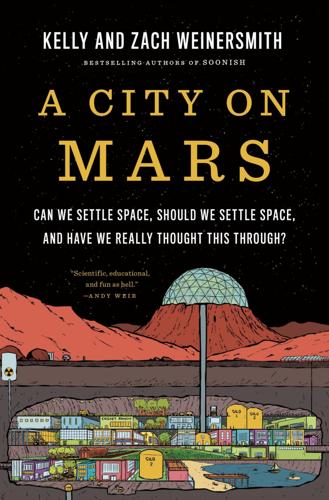
A City on Mars: Can We Settle Space, Should We Settle Space, and Have We Really Thought This Through?
by
Kelly Weinersmith
and
Zach Weinersmith
Published 6 Nov 2023
This is the strange, but we believe undervalued, tale of Biosphere 2. Biosphere 2: Contrary to Legend, Not an Unmitigated Calamity Earth is “Biosphere 1,” so naturally Biosphere 2 is a 3.14-acre nearly airtight greenhouse in Arizona containing the most complex sealed ecosystem ever created by humans. It was born through a strange partnership between a billionaire and an enigmatic counterculture technologist group called the Synergists. They weren’t quite a cult, but they were at least, let’s say, cult-adjacent. This created issues. Their charismatic leader, John Allen, had space in mind when he designed Biosphere 2, but his training and crew-selection notions weren’t exactly NASA’s.
…
No doubt his explanation would be more involved, but it sure seems like a major criterion for selection was “John Allen thinks you’re cool.” Socially, things didn’t go great. Early in their stay in Biosphere 2, the crew of eight began fighting, ultimately splitting into two hateful factions, each consisting of two women and two men. With more than a year to go, they were no longer on speaking terms. They stopped dining together or even making eye contact. Jane Poynter, one of the eight “biospherians,” recalled a day in which two different members of the opposing faction spat on her, separately, in a sort of coordinated saliva strike. Biosphere 2 had been set up with lessons for a future settlement in space in mind, which apparently stayed on the minds of the participants.
…
I wondered if people are really meant to be enclosed in small spaces, even as large, beautiful, and varied as Biosphere 2. The human species, after all, did not evolve indoors.” There were also particular reasons why relations broke down, mostly having to do with a dispute with the equivalent of mission control. However, the deeper issue was likely the screening process. We have trouble imagining a crew made of Chris Hadfields doing this sort of thing. There were also problems with food production. Shortly after the experiment ended, crew member Sally Silverstone published a book of recipes they’d used, called Eating In: From the Field to the Kitchen in Biosphere 2. Opposite page 1 is a photo of the eight “biospherians,” smiling awkwardly on the first anniversary of their stay, each looking substantially more gaunt than your typical chef.
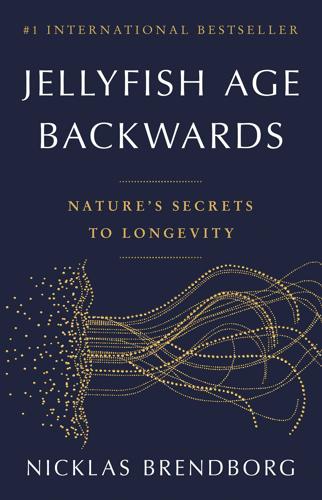
Jellyfish Age Backwards: Nature's Secrets to Longevity
by
Nicklas Brendborg
Published 17 Jan 2023
For these reasons, scientists envisioned trees as a pillar of their new ecosystem and planted plenty of trees in Biosphere 2. Trees live a long time, as we’ve learned, so a few years should be no problem, right? The trees in Biosphere 2 did get off to a good start. Because of the favourable conditions inside the giant greenhouse, they grew rapidly. But before the grand experiment was over, many of the trees were already dead. What were they missing? Not care and nurture. Quite the contrary, actually. What the trees of Biosphere 2 were missing was stress. More specifically, they were missing the stress that the wind normally subjects them to.
…
Incidentally, Roy Walford ended up trying calorie restriction on himself. In 1991, he was part of the first team inside Biosphere 2, the giant futuristic greenhouse, remember? The goal of Biosphere 2 was to create a closed ecosystem that could provide humans and animals with everything needed to sustain life. Walford and his team were locked inside the closed ecosystem for a full two years. As it turns out, building an entire ecosystem from scratch is really hard. The Biosphere 2 team had to drastically cut back their food intake, and eventually required assistance from outside. Over time, it became acceptable to finish each meal by licking the plate clean.
…
Over time, it became acceptable to finish each meal by licking the plate clean. I’m sure you aren’t particularly jealous to not have gotten the offer. But for Walford, these conditions were a scoop. His time inside Biosphere 2 allowed him to test calorie restriction on humans and the results were confirmatory. During their famished stay in Biosphere 2, all members of the scientific team had lower blood cholesterol, lower blood pressure, and better immune systems than they’d had before the big experiment. Since these early studies of calorie restriction, the effect has been proven many times over. When rodents have their calorie intake limited, they typically live between twenty and forty per cent longer than normal.
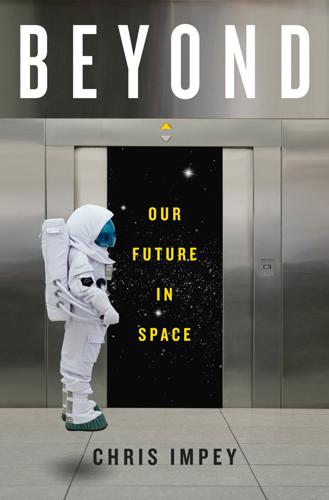
Beyond: Our Future in Space
by
Chris Impey
Published 12 Apr 2015
The Anatomical Record Part A, vol. 281A, no. 2, pp. 1256–63. 11: Living Off-Earth 1. “Biospherics and Biosphere 2, Mission One” by J. Allen and M. Nelson 1999. Ecological Engineering, vol. 13, pp. 15–29. 2. “Life Under the Bubble” by J. F. Smith 2010, from Discover magazine, online at http://discovermagazine.com/2010/oct/20-life-under-the-bubble#.UkvfALNsdOA. 3. Several Biospherians have written about their experience. See Life Under Glass: The Inside Story of Biosphere 2 by A. Alling and M. Nelson 1993. Santa Fe: Synergetic Press; and The Human Experiment: Two Years and Twenty Minutes Inside Biosphere 2 by J. Poynter 2006. New York: Thunder’s Mouth Press.
…
A few days later, two members of the first crew, Mark Van Thillo and Abigail Alling, allegedly vandalized the project by breaking panes of glass and opening an air lock and three emergency exits.4 Two members of the second crew had to be replaced. The second mission ended prematurely after only six months. Two decades later, it’s possible to make a more balanced judgment on Biosphere 2. Anyone reading about it in the popular media would have seen grandiose expectations and hype, followed by damning criticism. The project failed as a prototype for a completely sealed environment, but more than 200 published papers have been based on research done in Biosphere 2.5 It was the largest “closed system” habitat ever built, with five distinct biomes: ocean with coral reef, mangrove wetland, tropical rainforest, savanna grassland, and fog desert.
…
Dreaming the Biosphere by R. Reider 2010. Albuquerque: University of New Mexico Press. 6. “Calorie Restriction in Biosphere 2: Alterations in Physiologic, Hematologic, Hormonal, and Biochemical Parameters in Humans Restricted for a Two-Year Period” by R. Walford, D. Mock, R. Verdery, and T. MacCallum 2002. The Journals of Gerontology, Series A, vol. 57, no. 6, pp. B211–24. 7. “Coral Reefs and Ocean Acidification” by J. A. Kleypas and K. K. Yates 2009. Oceanography, December, pp. 108–17. 8. “Lessons Learned from Biosphere 2: When Viewed as a Ground Simulation/Analog for Long Duration Human Space Exploration and Settlement” by T.

The New Gold Rush: The Riches of Space Beckon!
by
Joseph N. Pelton
Published 5 Nov 2016
O’Neill envisioned a world in space that was contoured with hills and valleys and lakes, an “Earth-like world” that could sustain a rather large population and theoretically be self-sufficient. Biosphere 2 The idea of creating a sustainable space habitat has been envisioned by many but accomplished by few. The “biosphere” that was created in the desert of Arizona in the late 1980s, called Biosphere 2, was an attempt to create a viable self-contained world with “biospherians” inside this large structure. These would be future space colonists who were urged to grow their own crops and livestock and maintain a sustainable community.
…
There is yet another aspect to the planning for future space colonies that go beyond the issue of durable machines, and instead consider the vulnerabilities of humans in isolated communities and very long duration missions. The Biosphere 2 experiments not only exposed problems with the sustainability of the atmosphere inside the biosphere but also with human governance and conflict even in small groups left to themselves for extended periods of time. Within the Biosphere 2 before the experiment was shut down the biospherians evolved into what amounted to competing teams and sharp rivalries despite careful vetting of those chosen for the project. Other space agency projects to simulate long duration missions with test “astronaut teams” have exposed personality conflicts and even hostilities.
…
There are also literally thousands of science fiction stories that can suggest ways that off-world colonies or habitats or scientific settlements might be established, run, policed and economically sustained. Some are harmonious democracies that are able to sing “Cumbaya” together. Others become absolute dictatorships with iron rule. Some of the fictional colonies over time deteriorate and form into competing or warring tribes, such as more or less occurred with the unsuccessful “Biosphere 2” experiment. Others become a part of a vast galactic “empire,” where police or soldiers are magically deployed around a galaxy without regard to the laws of physics. In these future cosmic worlds there are such unlikely capabilities as warp drives or interstellar transport via wormholes to span light years of distance in an instance .
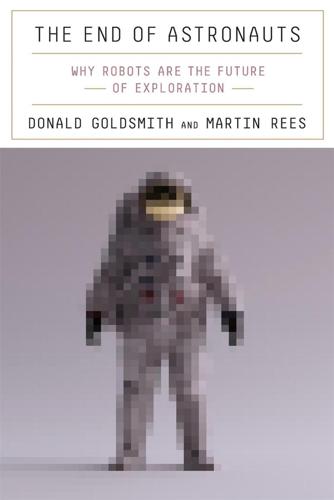
The End of Astronauts: Why Robots Are the Future of Exploration
by
Donald Goldsmith
and
Martin Rees
Published 18 Apr 2022
In any case, the project of implementing effective measures to stabilize Earth’s climate and biosphere so that the planet remains suitable for life is far less difficult than terraforming an entire planet to create an ecosystem from scratch. This comparison will appear again when we critique the possibility of space colonization in Chapter 7. Here’s a straightforward challenge to those who dream of terraforming Mars: can you make a “Biosphere 3” that succeeds on Earth? Biosphere 2, a privately funded research station in the Arizona desert, aimed to create a self-contained biosphere, a precursor of colonies on Mars or in space, within which eight humans would live for two years without outside assistance, amid an agricultural area, grasslands, wetlands, and a rain forest.
…
Two attempts during the early 1990s ended in failure that arose from diverse, simultaneous problems, including agricultural and atmospheric collapse as well as interpersonal difficulties.20 Some of these were on the way to being overcome when the most serious problem of all—a cutoff in funding—terminated the project. Although the precise interpretation of Biosphere 2’s results remains controversial, an excellent concept to implement before setting out to create a viable, self-contained colony on Mars would be the creation of such a self-contained colony that can flourish on Earth. The larger issue, of course, is what human activity has already done to the Earth as a whole.
…
,” The Planetary Society, April 19, 2021, https://www.planetary.org/articles/can-we-make-mars-earth-like-through-terraforming. 20. Carl Zimmer, “The Lost History of One of the World’s Strangest Science Experiments,” New York Times, (March 29, 2019), https://www.nytimes.com/2019/03/29/sunday-review/biosphere-2-climate-change.html. 21. John Grunsfeld, telephone interview, December 24, 2020. 22. Elton John and Bernie Taupin, “Rocket Man,” Honky Château (Uni, 1972), https://genius.com/Elton-john-rocket-man-i-think-its-going-to-be-a-long-long-time-lyrics. Chapter 6: Asteroids 1. Ron Miller, Asteroids, Comets and Meteors, Worlds Beyond (New York: 21st Century, 2004). 2.
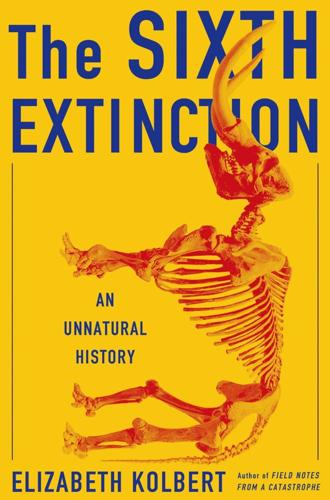
The Sixth Extinction: An Unnatural History
by
Elizabeth Kolbert
Published 11 Feb 2014
There are extensive coral reefs in the tropical Pacific, in the Indian Ocean, and in the Red Sea, and many smaller ones in the Caribbean. Yet curiously enough, the first evidence that CO2 could kill a reef came from Arizona, from the self-enclosed, supposedly self-sufficient world known as Biosphere 2. A three-acre, glassed-in structure shaped like a ziggurat, Biosphere 2 was built in the late nineteen-eighties by a private group largely funded by the billionaire Edward Bass. It was intended to demonstrate how life on earth—Biosphere 1—could be re-created on, say, Mars. The building contained a “rainforest,” a “desert,” an “agricultural zone,” and an artificial “ocean.”
…
For reasons mainly having to do with the richness of the soil that had been imported into the “agricultural zone,” decomposition won out. Oxygen levels inside the building fell sharply, and the Biospherians developed what amounted to altitude sickness. Carbon dioxide levels, meanwhile, soared. Eventually, they reached three thousand parts per million, roughly eight times the levels outside. Biosphere 2 officially collapsed in 1995, and Columbia University took over the management of the building. The “ocean,” a tank the size of an Olympic swimming pool, was by this point a wreck: most of the fish it had been stocked with were dead, and the corals were just barely hanging on. A marine biologist named Chris Langdon was assigned the task of figuring out something educational to do with the tank.
…
The saturation state is determined by a complicated chemical formula; essentially, it’s a measure of the concentration of calcium and carbonate ions floating around. When CO2 dissolves in water, it forms carbonic acid—H2CO3—which effectively “eats” carbonate ions, thus lowering the saturation state. When Langdon showed up at Biosphere 2, the prevailing view among marine biologists was that corals did not much care about the saturation state as long as it remained above one. (Below one, water is “undersaturated,” and calcium carbonate dissolves.) Based on what he was seeing, Langdon became convinced that corals did care about the saturation state; indeed, they cared about it deeply.

The Locavore's Dilemma
by
Pierre Desrochers
and
Hiroko Shimizu
Published 29 May 2012
The first two items, however, are untenable because conventional greenhouses can already be operated around the clock if so desired while the claim that a pest-free agricultural environment can be maintained on this planet is simply implausible. After all, insects and plant diseases found their way into the Biosphere 2 project, a self-contained ecosystem built in the middle of the Arizona desert.44 This leaves the basic economic trade-offs of such proposals, which essentially boil down to the fact that their additional costs (from building these structures to lighting, heating, and powering them) negate any economic benefits attributable to an urban location.
…
Growing Local: Sustaining Farms and Farmland for the Future http://www.farmland.org/programs/localfood/planningforagriculture/Sustaining-Farms-Farmland-Future.asp. 43 For a more detailed presentation of his own work, see Despommiers’s website at http://www.verticalfarm.com/ and Dickson Despommiers. 2011. “Vertical Farming.” In Cutler J. Cleveland (editor). Encyclopedia of the Earth http://www.eoearth.org/article/Vertical_farming. 44 D.V Marino, Tilak Ram Mahato, John W. Druitt, Linda Leigh, Guanghui Lin, Robert M. Russell and Francesco N. Tubiello. 1999. “The Agricultural Biome of Biosphere 2: Structure, Composition and Function.” Ecological Engineering 13: 199-234. To be fair, the designers of such schemes are more nuanced on this issue than their supporters. For instance, in his encyclopedia entry on vertical farming (ff209), Despommier writes that his scheme promises to “eliminate external natural processes as confounding elements in the production of food,” but he only claims that his proposal “reduces the risk of infection from agents transmitted at the agricultural interface,” not that it would be pesticide-free.
…
manure See also Livestock Animal, Vegetable, Miracle: A Year of Food Life (Kingsolver) Animal production in proximity to city railway and semen and embryos See also specific products Annals of Rural Bengal (Hunter) Apples grades pesticides production Aristotle Arthashastra (treatise) Arthurdale, West Virginia Athens Autarky food security and Smith, A., on Avery, Dennis Backward integration Bailey, Ronald Bananas Gros Michel Barber, Andrew Bastiat, Frédéric Battle for Grain Baudeau, Nicolas Bauerlein, Monika Bell, Beverly Bengal, India The Better Angels of Our Nature (Pinker) Biodiversity Biosphere 2 project Biotechnology Bittman, Mark Black markets Blemishes Bloom, Leah Blumenthal, Gary Boin, Caroline Book of Genesis Book of Revelation Born, Branden Boudreaux, Donald Bourdain, Anthony Bovine spongiform encephalopathy (BSE) Brands (food) Brandt, Karl Bread(table) British Columbia Broken Window Fallacy Brook Farm Institute of Agriculture and Education Brown, Sherrod BSE.
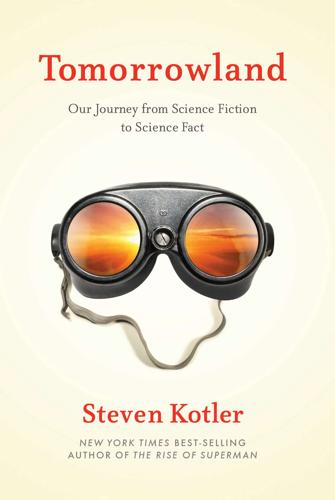
Tomorrowland: Our Journey From Science Fiction to Science Fact
by
Steven Kotler
Published 11 May 2015
This list goes on. To put this in different terms, the only other time terraforming has been attempted at scale — and a much smaller scale than is being tried here — was in the early 1990s, when the 3.4 acre dome in the desert known as Biosphere 2, the Arizona-based “Earth systems research facility,” was created to see if we could actually engineer ecosystems. Unfortunately, Biosphere 2 suffered an onslaught of unintended consequences — wildly fluctuating CO2 levels, massive fish die-offs, a cockroach and ant population explosion, to name but a few — and while the lessons learned were myriad, the moral was straightforward: Playing God ain’t easy.
…
See prosthetics Ashcroft, John, 210 Asimov, Isaac, 27 Asphaug, Erik, 147 aspirational genome, 131 asteroid mining, 141–52 compared to exploration of North America, 149 economics of, 149–50 mapping for, 147–48 for platinum-group metals, 150 science fiction on, 145, 148 space missions and, 144, 146–47 technology for, 148 for water, 151 “Asteroids of Gold” (Simak), 145 astral projection, 36 Atkinson, Peter, 136, 137, 138, 140 Atomic Energy Commission, 109 “Atoms for Peace” (Eisenhower), 109 Aum Shinrikyo, 233–34 Avatar (film), 27 ayahuasca, 161 Aztecs, 167 Babbitt, Bruce, 84 Batzer, Jeff, 8–9 Baumgartner, Felix, 125–30 Becker, Ernest, xv–xvi, 29, 175 Behr, Barry, 262 Beijing Genomics Institute, 237–38 Béliard, Octave, 87 Berger, Theodore, 26 Berthold, Arnold, 192 Bigelow Aerospace, 129 BioBricks, 234 bioethics, 211–12 Biological Weapons Convention, 230 BiOM prosthetic, 18–20 biosensing technologies, 242 Biosphere 2, 89 biotechnology, rate of progress in, 28–29. See also synthetic biology bioweapons, 219–46 crowdsourcing designs for, 221–23 FBI biosecurity conferences on, 236–37 genetically targeted, 224–25, 227–28 against heads of state, 224 radical transparency against, 243–46 sensing technologies against, 242–43 Blees, Tom, 111, 119 Blood, Benjamin Paul, 168 Bloom, Howard, 219 Blue Brain project, 28 Blue Heron Biotechnology, 231 brain-computer interface (BCI), 26 Brand, Stewart, 111 Brandt, Laura, 91 Branson, Richard, 145 Breedlove, Craig, xii, 97 “Brief proposal on immortality: an interim solution” (Martin), 27 British Journal of Sports Medicine, 190 British Telecommunications, 25 Britton, Willoughby, 43–45 Brown, Clare, 255 Brown-Séquard, Édouard, 193 Built to Survive: HIV Wellness Guide (Vergel & Mooney), 197 Bush, George W., 11, 111, 207, 209–10, 211–12, 213, 214, 217, 238, 261 Butcher, Grace, 37 Calder Hall, 110 Calfee Design Factory, 99 California Cryobank, 249–63 California Health Span Institute, 185 Cameron, James, 27 cancer.
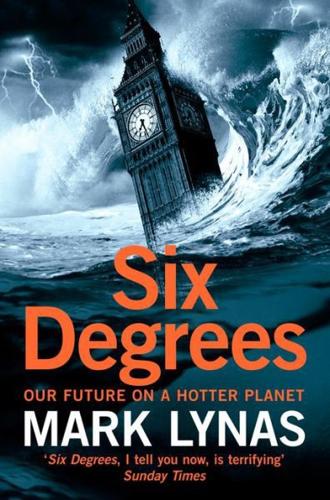
Six Degrees: Our Future on a Hotter Planet
by
Mark Lynas
Published 1 Apr 2008
But ecology is such a complicated web that we cannot even understand many of the living interactions that go on within ecosystems, let alone imagine that we can somehow redesign and replace them. Scientists once tried to build a sealed living world-nicknamed Biosphere 2-from scratch in a big greenhouse in the Arizona desert. They failed. As carbon dioxide levels rose within the sealed greenhouses, Biosphere 2's human inhabitants must have reflected on the lessons they were learning as they gasped for air. Functioning ecosystems cannot be created artificially. Life keeps us alive, and we lay waste to it at our peril. 3 THREE DEGREES What every Botswanan wants Botswanans have a major national obsession.
…
acid rain 171, 228, 230, 249 adaptation 94, 103, 196, 208-9, 220, 235 Afifi, Abdulkader 268 Africa 120 agriculture 89-90, 157-8, 173, 195 ancient 108, 220 disease 151-3 drought 22, 101-5, 173, 194 famine 112, 113 glacial retreat 13-18 monsoon 20-1, 52 rainfall 21-2 refugees 159 refuges 210 Agassiz, Lake 10 agriculture xv, 176, 261 abandonment 8, 174, 211 Africa xv, 89-90, 157-8, 173 Arctic 131 Australia 112, 124, 173 Central and South America 82, 85, 89, 134, 173 China 172-3 decline in 90-1, 157, 172-5, 196 drought-resistant crops 174 Europe 59-60, 62, 89 ‘firestick farming’ 122 growing season, extended 131, 158, 196 harvest failure 13, 113 India 78-9, 137, 173, 174 intensive 195 irrigation 8, 58, 82, 86, 140, 144, 159, 197 new areas 157, 186-7, 196, 197 North America 5-9, 88-9, 90, 143-4, 158-9, 173 Pakistan 139-41 refuges 210 slash-and-burn 120 UK 89, 210-11 worldwide agricultural drought 173-4 air-conditioning 59, 62, 178 Alaska 25, 221 meltdown 25-6, 75, 131, 187 North Slope fossils 219, 221 rainfall 129, 193 Alexandria, Egypt 163-5, 167 algae 34-5, 37, 58, 224 Algeria 19-20 Alley, Richard 68 Alps xv, 29-31, 58, 150, 177, 180-1, 246 Amazon River 119 Amazonia 32-3, 153, 175 death of 115-21, 190, 209, 252 deforestation 119-20 desertification 194, 209 drought 112, 115, 116, 173 American Association for the Advancement of Science 204 American Geophysical Union 69 Andes 80-5, 108, 115, 119, 238 Angola 104, 105 animals see wildlife Antarctic Ocean 199-200 Antarctica 67, 176 ancient 108-9, 220, 222, 228 coal 222 ice-free 211, 220 ice sheets 64, 71, 146, 167-70 Anthropocene 208, 235 aquifers 8, 53, 158, 166, 170, 194-5 Archer, David 205, 206 Arctic 10, 66, 128-31 agriculture 196 amplifier 24, 76, 189 ancient 109-10, 198-9, 203 ice-free 25-7, 109-10, 130, 170, 186, 203, 220 meltdown 23-8, 66-73, 186-90, 246 peoples 76-7 vegetation 76 wildlife 33, 72-7, 187 Arctic Climate Impact Assessment 75 Arctic Ocean ancient 199, 219, 249-50 freshwater run-off 188 methane hydrate melt 205-6 sea-ice xx, 72-7, 129, 186-7 Argentina 194 Asian Brown Cloud 136 Atacama Desert, Peru 113 Atlantic Ocean: ancient 201, 218, 219 circulation 9-13, 110, 176 freshwater run-off 10-11 hurricane formation 42-6 North 69 tropical 22 Atlas Mountains, Morocco 180, 181 atmosphere 128-9, 234-5, 236-7 ancient 202-5, 222, 225, 230-1, 249-50 atolls 16, 46-7 Australia 31-8, 95, 211 agriculture 112, 124, 173 bushfires 122-5 coal 221 desertification 194 drought 112, 113, 173, 194 Australian Conservation Foundation 123 avalanches 180 submarine 201, 206-8 Axel Heiberg Island, Canada 203 Baker, Andrew 37 Bakun, Andrew 238 Banda Aceh 207 Bangkok, Thailand 72 Bangladesh 79, 132, 135, 137, 165 Barbados 166 Barrow, Alaska 25 Beever, Dr Erik 40 Bennike, Ole 109 Benton, Michael 230-1 Bhopal, India 238 Bighorn Basin, Wyoming 199 biodiversity 33-4, 91-7, 154-6, 198, 213, 234, 240, 252 Amazon 119 China 171 marine 154 plants 39 under threat 18, 41 biofuels 274-6 Biosphere 2 97 birds 75, 77, 92, 94, 95, 120, 155 Black Sea 237 bogs, thawing 188-9 Bolivia 84, 121 Bombay see Mumbai Boston, USA 165 Botswana 90, 101-5, 151 Bowman, Malcolm 147 Brahmaputra River 138, 193 Brazil 42, 43, 44, 95, 120, 121, 194 desertification 194 hurricanes 42-4 rainforest 120 Brigham, Lawson 189 British Antarctic Survey 110, 167 British Council 14 British Virgin Islands 38 Broe, Pat 72 Bryden, Professor Harry 11, 12 Buffett, Bruce 205, 206 Bunyard, Peter 119 Burke, Eleanor 22 Burkina Faso 90 Bush, George W. 264 bushfires, Australia 122-5 butterflies 92, 93, 95 Cairo, Egypt 195 calcium carbonate 34, 53-6, 221 Caldeira, Professor Ken 54 California 3-5, 8-9, 85-8, 115, 142, 144-5, 195 California Coastal Range 87 Cameroon 232 Camill, Phil 188, 190 Canada xvii, 131, 188, 196 agriculture 90, 144, 158, 174, 196, 197 ancient 7 arctic 76, 131, 187 forest fires 197 fossil fuels 73, 221, 269 habitable areas 196, 197 rainfall 129 river flows 193, 196 Canberra, Australia 124-5 Cape Floristic Region, South Africa 39 carbon 96, 117, 205, 221-2, 267, capture and storage 271, 273, 276 carbon cycle 56, 116, 117-19, 190, 220-2, 225, 227, 250,254-5, 256 carbon trading 257 dissolved 188-9 release from seabed 202 release from soil 117-18, 188, 250-1 sequestering 175, 221-2, 223 carbon dioxide xix-xx, 89, 96-7, 252-3 ancient atmosphere 110-12, 203-4, 220, 225, 229, 230, 233, 249-50 and climate sensitivity 248-9 emissions 78, 131, 204, 234-6, 246-7 fertilising effect of 174 from fires 197, 203 ocean acidification 53-6 plant emissions 60 volcanic outgassing 232, 233, 235 Caribbean 38, 113 Carboniferous period 234 Carnegie Institution 54 cars 172, 271, 272, 276 Carson, Rachel 95-6 Cascades, USA 87 Caspian Sea 178 cattle ranching 8, 19, 102, 103, 119, 184 Cayman Islands 63 Central America 82, 83-4, 85, 89, 133-5, 173 Chaco Canyon, New Mexico 5-6 Chad, Lake 20 Chernobyl 176 Chile 89, 194, 211 Chilingarov, Artur 73-4 Chimu civilisation 82, 83 China xxii, 140, 197, 218 coal 221 conflict 197 desertification 197 droughts 51-3 early civilisation 172-3 emissions 257, 258, 264 floods 112 forests 155 hypercapitalism 170-5 monsoon 52-3, 193, 209 water supply 140, 194 civilisations, collapse of 82-3, 131-5, 174-5 climate change xix-xx, 6, 10-11 ancient 15-16, 23, 197-206 conferences on 14 denial 14, 16, 262-5 modelling xv, 105-7, 194-6, 217, 248-51 speed of xxi, 235-6 transient xxi-xxii climate sensitivity 248-50, 252-3 climate zones, shifting 27-8, 123, 129 climatic envelope 94 clouds 107, 114, 125, 175 coal 221, 222, 226, 234, 262, 269, 271 coasts 72, 76, 145-8, 183, 184-5, 193 coccolithophores 54-5, 56 Collapse: How Societies Choose to Fail or Survive (Diamond) 134 Colorado River, USA 6, 86, 142-5, 167 Columbia 121 Columbia River, USA 87 Comiso, Josefino 75 computer modelling 12, 22 carbon-cycle feedback 116-18 climate xv, 105-7, 194-6, 217, 248-51 El Niño 113-14 global and regional models 106 Hadley Model 39, 59, 105-6, 134 hindcasting 104, 106 hurricane 128 hydrological 139 sea temperature 110 conflict 6, 212-14 over climate refugees 141, 159, 179 over habitable land xxii, 197 over oil 268-9 over water xxii, 85, 86, 141 conservation, site-based 94 continental climates 198 continental drift 218 continental shelf 237 collapse of 201, 206-7 contraction and convergence 257 Cooke, Jennifer 184, 185 cooling: aerosols 135 north-west Europe 9, 12, 211 nuclear winter xviii, 125, 233 Younger Dryas 10 coral: bleaching 34-9, 154-5 reefs 34-9, 42, 63, 91, 154-5, 209, 220, 246 Coral Coast, Fiji 38-9 Cordillera Blanca, Peru 81-2, 84 Cordillera Central, Peru 83-4 Cornwall 28 Costa Rican golden toad 40-1 Cox, Peter 117, 273-4 Cretaceous 56, 200, 217-23, 236, 250 Crump, Marty 40-1 CSIRO 33-4, 122-3 cyclones see hurricanes Cyprus 62 dams 86, 142-3, 167, 196 Dante xviii, 217, 245-6 Danube River 181 Dasuopu, Tibet 14 Dawson, Mary 197, 198 Democratic Republic of Congo 16 Day After Tomorrow, The 9 deforestation 14, 175-6, 247 Amazonia 119-20 Central America 134 deforestation diesel 276 deglaciation see glaciers denial 14, 16, 262-5 Denmark 73, 149 Department for Environment, Food and Rural Affairs (UK) 78 Department for International Development (UK) 139 desalination plants 178 desert: Amazonia 115, 116 Europe 58, 60, 62, 150, 194 Kalahari Desert 102, 103-4, 105, 194 Marine 224 Mediterranean rim 150-1 North America 3-9 Polar 67 Sahara 21-2, 23, 61, 120, 151, 180, 186, 194, 195, 224 sandstorms 224 spreading 150-1, 186, 194-6, 209, 246 Diamond, Jared 133-4 Dickens, Gerald 200, 204 disease 123, 151-3, 158 drought 60, 193 Africa 101-5 and agriculture 157, 173-4 Amazonia 112, 115, 116, 173 ancient 16, 133-4 Australia 112, 113, 173, 194 Central America 83-4, 133-5 China 51-3 ENSO-related 113 Europe 58, 60, 62, 150, 194 extreme 4, 23 hotspots 173-4 Mediterranean 62-3 Palmer Drought Severity Index 22-3 perennial 194, 209 Sahel 18-19, 22-3 spread of 22-3 threat to woodland 94 UK 177-8, 182 US 3-9, 60, 86-8, 129, 143, 142-5 Doyle, Arthur Conan 153, 154 Dudh Koshi River 80 Dukes, Jeffrey 260, 265-6 dust storms 9, 51-2 Dust Bowl 7-8, 9, 88, 144, 194 Earth: thermal time lag 246, 251 thermoregulation systems 176 earthquakes 207 ecological overshoot 134 economics 170-2 ecosystems 91-7, 175-6, 222-3, 240, 261 Arctic 187 Wet Forest 31-4 Ecuador 84, 89 Eemian interglacial 52, 63, 64 Egypt 19, 195 El Niño 83, 112-15, 224 Ellesmere Island, Nunavut 25, 109, 197-8 Emanuel, Kerry 45, 46 emissions 113, 258, 259 contraction and convergence 257 cuts in 124, 246, 253-9, 276-7 future scenarios 247-8 India 77-8 permits 257 rate of 56, 246, 259 stabilising 276-7 targets 251-9 see also greenhouse gases energy: efficiency 271, 272-3, 275-6 renewable 258, 267-70, 271-7 ENSO 113, 114, 115 Environmental Research Letters 71 Eocene 198, 199, 203-4, 208, 209 see also Palaeocene-Eocene Thermal Maximum erosion: coastal 76, 145-8, 183, 184-5, 193 hillside 134 soil 170, 184-5, 202, 203, 214, 227-8 Estonia 59 ethanol 275 Ethiopia 18, 90, 108, 194, 210 Europe: agriculture 59-60, 62, 89 ancient 218, 220 cooling 9, 10, 11-12 desertification 150, 177-8, 186 drought 58, 60, 62, 150, 194 El Niño effect 113 extinctions 95, 156 floods 148-51, 182-4 heatwaves 57-61, 62, 177-9, 180-2 hurricanes 44-5 rainfall 62, 177 refuges 159 storms 148-51 temperature rise 175-9, 186 wildfires 62 European Union 256, 276 Everest, Mount 138, 139 extinctions 33, 39-41, 76, 77, 86, 91-7, 208 Anthropocene Mass 235 end-Permian 226-34 Paleocene-Eocene 208-10 human 240 living dead species 156 marine 208-10, 224, 225-6, 229, 233, 234 mass 56, 92, 157, 201, 224, 226-34, 235 plant 39, 76, 77, 91, 93-4, 155, 228 Fahnestock, Mark 69 famine 88, 89, 90-1, 103, 158-9, 213 Africa 112, 113 India 78-9 mass 174 Sahel 18 Faroe Islands 207 feedbacks 190, 252, 255 carbon-cycle 60-1, 116-19, 190, 245, 250, 255 desertification 194 ice-age 255 ice-albedo 28, 70-1 methane 188-90, 202, 204-6 Fiji 38-9, 166 Finland 177 flood barriers 147, 148, 165 flooding: Africa 151 atolls 46-7 coastal cities 145-8, 164-7, 193, 211-12 continental interiors 193, 218 Europe 148-51, 182-4 flash floods 5, 23, 146, 180, 203, 230 monsoon see monsoon post-ice age 66; storm surge see storm surge UK xiii-xiv, 148-51, 182-4, 193-4 USA xiv, 115, 145-7, 158, 165-6 food 88-91, 140-1, 166, 172, 213 aid 210 prices 8, 91, 158, 275 production 210, 261-3 shortages 134, 140-1, 158, 174, 186, 275 web, Arctic 75 see also agriculture Ford, Derek 63 forest 262 ancient 229 boreal 197 carbon emissions 60 deforestation 119-20, 175, 176, 247 die-back 60, 78 montane 17-18 polar 187, 208, 220 reforestation 272 US West 144 forest fires 17, 61-2, 122-5, 197, 203 Amazonia 120-1 Asian 276 Australia 122-5 Europe 58, 59, 61-2 Indonesia 118-19, 121, 136-7 North America 4, 87-8, 144-5 fossil fuels 73, 78, 171-2, 221, 222, 223-6, 261, 267-70 France 58, 62, 149, 177 Francis, Jane 108, 110 freshwater surges 10-11 Frey, Karen 188-9 Friends of the Earth 256 frogs 31-4, 40-1 frost 89, 219 fungi 228 Gabon 90 Gaia Theory 176, 221, 240 Ganges, River 138, 140, 141, 193, 211 gas, natural 7, 73, 222, 260, 261, 268, 269, 271, 272, 276 Gazprom 73 Geology 185 Geology Today 111 Geophysical Research Letters 43, 185 Germany 58, 59, 94, 149, 150, 181, 221 Ghana 18 Giant Sequoia National Park 4 glaciers 10, 80, 110 Alpine 30, 58, 177, 180-1, 187, 246 Andean 80-5 Antarctic 108-9, 167, 168, 169 Arctic 25-6 Greenland 66-9, 138 Himalayas 80 Iceland 130-1 Karakoram 137-42 Kilimanjaro 13-18 Scandinavian 131 Gladwell, Malcolm 23 Glen Canyon Dam 142-3 Global Carbon Project 246 Global Commons Institute 257 global dimming 107, 249 global warming xix accelerating xiv, 206 ancient xvii Arctic amplifier 24, 76 climate zone shifts 28 peaks 223-6 positive feedback 189, 252 runaway 204-5, 231, 246, 253, 256, 258 speed of xxi, 235-6 thermal inertia xxi-xxii, 111 Gobi Desert 51, 194, 195 GRACE (Gravity Recovery and Climate Experiment) 70 Great Barrier Reef 34-6 Great Lakes 9 Great Plains 4, 5, 7, 155 Great Depression 210 Greece 177 greenhouse gases xix-xx, 110, 176, 178-9, 188, 236, 247 ocean acidification 53-4 see also carbon dioxide emissions methane Greenland 6, 10, 13, 67-70, 76, 129, 187, 252 ancient 24, 75, 109, 219, 233 ice sheet collapse 64-72, 129, 130, 131, 146, 170, 176, 252 Greenpeace 120 Grindelwald, Switzerland 30 Guadalupe River 184 Gulf of Mexico 224 Gulf Stream 9-10, 211, 237 Hadley Centre, UK 22-3, 39, 59, 105-6, 116, 117, 118, 119, 120, 134, 148,205 Haeberli, Wilfried 30 Hall, T.

Lifespan: Why We Age—and Why We Don't Have To
by
David A. Sinclair
and
Matthew D. Laplante
Published 9 Sep 2019
Adult Okinawans were also leaner, taking in about 20 percent fewer calories than their mainland counterparts. Kagawa noted that not only were the lifespans of Okinawans longer, but their healthspans were, too—with significantly less cerebral vascular disease, malignancy, and heart disease.5 In the early 1990s, the Biosphere 2 research experiment provided another piece of evidence. For two years, from 1991 to 1993, eight people lived inside a three-acre, closed ecological dome in southern Arizona, where they were expected to be reliant on the food they were growing inside. Green thumbs they weren’t, though, and the food they farmed turned out to be insufficient to keep the participants on a typical diet.
…
His Waddington Landscape was proposed to help understand how a cell can divide to become the hundreds of different cell types in the body. ROY L. WALFORD (June 29, 1924–April 27, 2004): American biologist who rejuvenated the field of caloric restriction. One of eight crew members inside Arizona’s Biosphere 2 from 1991 to 1993. In medical school, reportedly used statistical analysis to predict the results of a roulette wheel in Reno, Nevada, to pay for medical school and a yacht, and sailed the Caribbean for over a year. H. G. WELLS (September 21, 1866–August 13, 1946): British science fiction writer who foresaw air raids in World War II, tanks, nuclear weapons, satellite television, and the internet.
…
Two of the authors of the report were themselves part of the crew who elected to be locked up inside the Biosphere for two years and live on a low-calorie diet, with just 12 percent protein and 11 percent fat in terms of calorie consumption. Despite this calorie restriction and a 17±5 percent weight loss, all eight crew members were healthy and highly active during the two-year period. R. L. Walford, D. Mock, R. Verdery, and T. MacCallum, “Calorie Restriction in Biosphere 2: Alterations in Physiologic, Hematologic, Hormonal, and Biochemical Parameters in Humans Restricted for a 2-Year Period,” Journals of Gerontology, Series A: Biological Sciences and Medical Sciences 57, no. 6 (June 2002): 211–24, https://www.ncbi.nlm.nih.gov/pubmed/12023257. 7. L. K. Heilbronn, and E.

The One-Minute Workout
by
Martin Gibala
Published 5 Jan 2017
Those long-term studies haven’t been done—but there is a community of people in North America who believe it’s healthy to subsist on an extremely low-calorie diet. The movement is known as calorie restriction, and it originated with a UCLA medical school professor named Roy Walford. As one of eight crew members in an experiment in isolated, self-contained communal living called Biosphere 2, which lasted from 1991 to 1993, Walford convinced his fellow bionauts to attempt to live according to the low-calorie, high-nutrient diet that calorie restriction required. When the bionauts left their facility, they’d substantially improved their blood cholesterol, blood pressure, and other health markers.
…
Aberdeen, University of, 225 Abu Dhabi Adventure Challenge, 164 Adenosine diphosphate (ADP), 38 Adenosine monophosphate (AMP), 38, 39 Adenosine monophosphate activated kinase (AMPK), 38, 41 Adenosine triphosphate (ATP), 32–34, 38, 39 Adventure racing, 163–64 Aerobic fitness, 11–14, 25, 46–47, 54, 196 See also VO2max Aerobic workouts, 3, 17, 20, 45, 81, 107, 122, 124 high-intensity, 82, 113–14, 124, 128, 154, 192 Afterburn, 128–29, 211–13 Aging, 1, 46, 100, 121, 130, 175, 180–87 reversing normal effects of, 248, 250 AICAR, 7, 250–51 Air Force, U.S., 54 Air squats, 204, 236 American College of Cardiology, Sports and Exercise Leadership Council, 68–69, 84–85 American College of Sports Medicine (ACSM), 7, 54, 68, 72–73, 80, 94 American Diabetes Association, 88 Anaerobic exercise, 14, 17, 20, 33–34 Archives of Internal Medicine, 76 Argentina, 222 Armstrong, Lance, 13 Army, U.S., 57–58, 61 Asmussen, Erling, 244 Athletics Weekly, 56 Atkins diet, 216, 229 Australia, 40–41, 102–4, 149–50, 209–10 Baar, Keith, 21 Bacon, Andrew, 241 Ball State University, 61 Bandura, Albert, 117 Bangsbo, Jens, 177–78, 182 Bannister, Roger, 13, 49–50, 177 Barbell squats, 35 Bascomb, Neal, 49 Basic Training Workout, 140–42 Basketball, 95, 132, 181, 195 Batterham, Alan, 100–101 Baumeister, Roy, 118 Bear crawl, 96 Beginner Workout, 137–39, 154 Bench presses, 182 Biddle, Stuart, 103–4 Bikes, see Cycling; Exercise bikes; Stationary bicycles Biosphere 2, 226–27 Blade Runner (movie), 18 Blair, Steven, 206–8 Blomkamp, Neill, 18 Blood sugar, 44, 173, 240, 247 in people with diabetes, 67, 87–92, 138, 156–57, 162 Body fat, 150 reducing, 137, 156 Body-mass index (BMI), 207, 227 Bodyweight exercises, 9, 35, 182, 202–3, 252 See also specific exercises Boot camp workouts, 50, 107, 108, 141 Borg, Gunnar A.V., 125 Boston Marathon, 69, 79 Bouchard, Claude, 239–40 Bowerman, Bill, 50 Bowers, Dick, 57–58 Bowling Green University, 57 Breathing rate, 32, 36 Britain, see United Kingdom British Army, 54 British Columbia, University of, 89, 107–9, 161, 196 Burns, George, 53 Burpees, 96, 98, 121, 128, 183–87, 236 in bodyweight exercises, 9, 197, 204 in Wingate Classic, 130 California, University of Berkeley, 51 Los Angeles (UCLA), 226 Calisthenics, 57, 149 See also specific exercises Calories, 101, 211–18, 221–31, 238 Canada, 50–54, 89, 98–99, 209, 239 Department of National Defence, 51–53 See also specific universities Cancer, 1, 93, 226, 242–43, 247 Cardiovascular disease, 68, 73–87, 114 interval training protocols for patients with, 77–87, 94, 143, 144, 156 reduced risk of developing, 1, 11, 75–77, 92–93, 181, 200, 225, 238, 250 VO2max and, 73–75 Cardiovascular fitness, 9, 17, 73, 82, 98, 187, 252, 254 Cell (journal), 7 China, Communist, 56 Christie, Jeff, 77, 86, 103, 114, 116 Chronic diseases, 46, 67, 207 reducing risks of developing, 71, 73, 192, 205 See also specific diseases Circuit training, 54, 99, 134, 176 Circulation (journal), 82 Coca-Cola, 222 Cold war, 50–51, 57 Columbia University, 184 Comparisons, avoiding, 119 Computer technology, 101 Confidence, boosting, 111, 113, 117–19 Cool-downs, 140, 188, 253 in protocols, 89, 94, 151, 170–72, 193, 210 in studies, 83, 85–86, 133, 199 Copenhagen, University of, 64, 138, 146–47 Muscle Research Centre, 60, 244–46 Copenhagen City Heart Study, 168 Coyle, Edward F., 21 Crab walk, 96 Crunches, 96 Curtin University, 102 Cycling, 2, 9, 36, 67, 92 long-distance, 14, 30, 35, 76, 168 in study protocols, 18, 40, 61, 98, 168–69, 179 in workouts, 128, 130, 143, 182, 204, 237 See also Exercise bikes; Stationary bicycles Denmark, 177 Diabetes, 132, 143, 223 interval training for people with, 67, 87–92, 94, 109, 118, 138, 157, 162 reduced risk of developing, 1, 11, 92–93, 144, 208, 225, 238, 250 Dundee, University of, 226 Eddy, Duane O., 61–62 Endothelial function, 84–85 England, see United Kingdom Endurance training, 5, 6, 13, 111, 178–79 athletic and health benefits of interval training compared to, 55–57, 74, 83, 167, 173, 192–93 physiology of, 30, 35, 37, 67, 57 in study protocols, 17, 19–21, 23–26, 39–41, 57–64, 69, 85, 132, 147, 152–53, 195–96, 209–11, 239–42 Epidemiological studies, 72, 92, 93, 167, 169 Esquire magazine, 7, 18, 170 European College of Sport Science, 60 European Heart Journal, 75 Excess post-exercise oxygen consumption (EPOC), see Afterburn Exercise bikes, 106, 121–22, 126, 128, 183, 233, 253 Basic Training Workout on, 141 for cardiac rehab, 84–85 Fat Burner Workout on, 151 Hickson protocol on, 178 High-Octane Ride, 237 Midwestern Workout on, 159 One-Minute Workout on, 173, 174, 176 for spin classes, 99, 107, 122, 208 Tabata Classic on, 195 Ten by One Workout on, 89, 109 See also Stationary bicycles Exercise Metabolism Research Group, 18 Exercise pills, 7, 244, 250–51 Exerkines, 249–51 Exertion ratings, 125–28 Facebook, 2 Fast Diet, The (Mosley), 227 Fat Burner Workout, 131, 149–51, 182, 207, 210 Finland, 47 5BX, 52–54 Florida State University, 118 Fonda, Jane, 50 Foster, Carl, 54, 80 Fox, Edward L., 57–59, 61, 63, 79 France, 75–67 Freiburg University, 55 Friends (TV sitcom), 235, 236 Frog hops, 96 Frontiers of Psychology (journal), 102 Frozen Otter Ultra Trek, 164 Gatorade, 222 Sports Science Institute (GSSI), 31 Generation 100 study, 93–94 Germany, 55–56 Gerschler, Woldemar, 55–56 Gibala, Lisa, 10, 235 Go-To Workout, 134, 176, 202–4 Guardian (newspaper), 48, 207 Guidelines, public health, 8, 12, 23, 73, 92–94 Hägg, Gunder, 49 Harbig, Rudolf, 56 Hardcastle, Sarah, 102–4 Hargiss, Homer Woodson “Bill,” 50 Hargreaves, Mark, 30–31, 40 Harridge, Stephen, 180 Hartford (Connecticut) Hospital, 69 Harvard University, 93, 101 School of Public Health, 221 Harvey Nichols (department store), 238 Hawley, John, 250, 251 Health and Fitness Journal, 54 Heart (journal), 75 Heart disease, see Cardiovascular disease Heart rate, 23, 76, 115, 124–26, 132 breathing rate and, 32, 36 in study protocols, 83, 86–87, 89–90, 105, 109, 212 during workouts, 130, 183, 184, 193, 195, 202–4 Heriot-Watt University, 170 HERITAGE Family Study, 239–41 Hickson, Robert, 178–79 High-Octane Ride exercise bike, 237–39 High steps, 96 Hippocrates, 71 Hockey, 51–52, 95, 131–32, 181, 182, 253 Holloszy, John, 250, 251 Homeostasis, 36, 43–45 How They Train (Wilt), 48 Illinois, University of, 51, 52 at Chicago, 159 India, 56 Industrial revolution, 101 Insulin resistance, 87–88, 91–92, 162 Interleukin-6 (IL-6), 244–47 International Society for Behavioral Nutrition and Physical Activity, 103 Internet, 227 Intervall-training, Das (Gerschler), 56 Interval Training (Fox and Mathews), 59 Israel, 223 Italy, 177 Jacobs, A.

Fire and Fury: Inside the Trump White House
by
Michael Wolff
Published 5 Jan 2018
The Washington Post traced his many addresses to no clear conclusion, except a suggestion of possible misdemeanor voter fraud. In the midnineties, he inserted himself in a significant role into Biosphere 2, a project copiously funded by Edward Bass, one of the Bass family oil heirs, about sustaining life in space, and dubbed by Time one of the hundred worst ideas of the century—a rich man’s folly. Bannon, having to find his opportunities in distress situations, stepped into the project amid its collapse only to provoke further breakdown and litigation, including harassment and vandalism charges. After the Biosphere 2 disaster, he participated in raising financing for a virtual currency scheme (MMORPGs, or MMOs) called Internet Gaming Entertainment (IGE).
…
INDEX Abbas, Mahmoud, 231, 299 Abe, Shinzō, 106 Abraham Lincoln, USS, 182 Abramovich, Roman, 80 Adelson, Sheldon, 6, 141–43, 178, 289, 309 Afghanistan, 42, 263–68, 275–76 Agalarov, Aras, 254 Agenda, The (Woodward), 116 Ailes, Beth, 1, 4, 223–24 Ailes, Roger, 1–8, 11, 24, 26, 57, 59–60, 147, 164, 178–79, 195–98, 210, 212, 222–23 Alabama, 301–3 Al Shayrat airfield strike, 193–94 alt-right, 59, 116, 121, 128–29, 137–38, 174, 180, 296 American Prospect, 297 Anbang Insurance Group, 211 anti-Semitism, 140–44, 296 Anton, Michael, 105–6, 185, 229 Apprentice, The (TV show), 30, 76, 92, 109, 200 Arif, Tevfik, 100 Armey, Dick, 81 Arthur Andersen, 278 Art of the Deal, The (Trump and Schwartz), 22 Assad, Bashar al-, 183, 190 Atlantic City, 30, 99, 210 Atwater, Lee, 57 Australia, 78 Ayers, Nick, 240 Azerbaijan, 254 Bahrain, 231 Baier, Bret, 159–60 Baker, James, 27, 34 Baker, Peter, 277 Bannon, Steve, 185, 209, 247 Afghanistan and, 263–68 agenda of, in White House, 115–21, 275–77 agenda of, post-firing, 301–10 alt-right and, 137–38 background of, 55–60 campaign and, 3, 12–13, 17–18, 55, 86, 112–13, 201 Charlottesville and, 294–96 China and, 7–8, 297 Cohn and, 144, 146, 186 Comey firing and, 169–70, 211–15, 217–18, 232–33, 245–46, 261 CPAC and, 126–34 eve of inauguration and, 4–10 first weeks of presidency and, 52–55, 60–65, 67–70 Flynn and, 95, 103, 106 immigration and, 61–65, 77, 113 inauguration and, 42–43, 148 influence of, 70, 85, 108–10, 188 isolationism of, 227 Israel and, 140–43 Ivanka and, 146–48, 186–87, 211, 218–19, 221, 257 Jarvanka vs., 140, 174–82, 235–39, 243, 257, 261–62, 272, 274, 277, 280–81, 289–91 Kelly and, 287–91, 294–97 Kushner and, 69–70, 72, 77, 87, 110, 132, 134, 140–48 Kuttner call and firing of, 297–300, 307 media and, 38, 90–91, 93, 195–97, 206–9, 222 NSC and, 103, 176, 190–92 Obamacare and, 165–67, 170–72, 175 Paris Climate Accord and, 238–39 Pence and, 124 Priebus and, 33–34, 110 role of, in early presidency, 31–35 Russia investigation and, 7, 95, 97, 101, 154–55, 157, 170, 211, 233–46, 254–55, 257, 260–62, 278–81, 308 Ryan and, 161–63 Saudi Arabia and, 229–30 Scaramucci and, 268, 271, 274, 277, 281–85 Sessions and, 155, 241–42, 277–78 Syria and, 190–94 Trump on, 122–23 Trump pressured to fire, 173–82 Trump’s personality and, 21, 23, 35, 45, 47–48, 148–49, 158 Trump’s Times interview and, 277–78 White House appointments and, 4, 36, 86–87, 89, 189, 285 Barra, Mary, 88 Barrack, Tom, 27–29, 33, 42, 85, 233, 240 Bartiromo, Maria, 205 Bass, Edward, 56 Bayrock Group, 100–102 Bedminster Golf Club, 165, 213–14, 216, 287–94, 297, 302, 307 Beinart, Peter, 297 Benghazi, 97 Berkowitz, Avi, 143 Berlusconi, Silvio, 100 Berman, Mark, 78 Best and the Brightest, The (Halberstam), 53–54 Bezos, Jeff, 35 Biosphere 2, 56 Blackstone Group, 35, 78, 87, 298 Blackwater, 265 Blair, Tony, 156–58, 228 Blankfein, Lloyd, 144 Bloomberg, Michael, 117 Boehner, John, 26, 161 Boeing, 88 Bolton, John, 4–5, 189 border wall, 77–78, 228, 280, 303 Bossie, David, 58, 144, 177, 234, 237, 301 Bowles, Erskine, 27 Boyle, Matthew, 298–300 Boy Scouts of America, 284 Brady, Tom, 50 Brand, Rachel, 279 Breitbart, Andrew, 58–59 Breitbart News, 2, 32, 58–59, 62, 121, 126–29, 138, 160–62, 167, 179–80, 196, 207–8, 237, 266, 275, 297–98, 309 Brennan, John, 6, 41 Brexit, 5 Britain, 70, 157 Brooks, Mel, 15 Bryan, William Jennings, 45 Brzezinski, Mika, 66–69, 121, 176, 247–49 Brzezinski, Zbigniew, 66 Buckley, William F., 127 Bush, Billy, 10, 13–14, 34, 86, 96, 161 Bush, George H.

Whole Earth: The Many Lives of Stewart Brand
by
John Markoff
Published 22 Mar 2022
In addition to Shell, both Volvo and AT&T had signed on as sponsors, and from 1987 to 1989 Remy and Brand organized six conferences that brought together a small group of scientists and engineers to meet with the corporate executives. The meetings were organized so that the corporate sponsors sat outside of the circle as observers to the discussion. Each of the conferences took place in a different location, ranging from the first meeting held at Biosphere 2—an elaborate sealed environment intended to explore what it would be like to live in outer space, which was being constructed outside of Tucson—to Hillis’s Thinking Machines Corporation in Cambridge. Others were held in places like Sweden, Big Sur, and Costa Rica. Each of the conferences was organized around several “learning journeys” selected by Brand and Remy—essentially brief field trips to visit interesting places and organizations.
…
“There are fortunes to be made here,” one Autodesk technologist enthused to Brand on one of his visits. “It’s totally virgin territory.” Soon afterward, Brand listened to an Autodesk talk by a young computer hacker named Jaron Lanier. Lanier, whom Brand had met during the first Learning Conference at Biosphere 2, was a computer scientist who was pushing the boundaries of what the technology could do. (Several years earlier, in a review of one of Lanier’s games in the Whole Earth Software Catalog, Art Kleiner said, “If this were still the psychedelic era, every game would be like Moondust.”) His inventions would make him one of the pioneers of virtual reality technology, designed to create exotic simulated computer worlds experienced through computerized headsets.
…
“J.,” 174–75, 177, 179, 180, 223, 229, 233, 305 Balme, Pamela, 59, 61 Barlow, John Perry, 325 Barringer, Felicity, 341–42 Barthelme, Donald, 201 Bateson, Gregory, 103, 208, 213, 215, 220, 222, 225, 231, 277 SB influenced by, 45, 46, 92, 208, 216–17, 219, 222, 232, 269, 363–64 SB’s Harper’s profile of, 213, 216–17 Bateson, Mary Catherine, 289 Beat poets, Beat culture, 3, 16, 33–34, 35, 37, 47–49, 126 Be Here Now (Ram Dass), 107, 139 Bellwood, Lucy, 355 Benign Genres, SB’s concept of, 251–52, 290 Berg, Peter, 206 Berry, Wendell, 232 “Better Than the Next Best Thing to Being There” (Kleiner), 240 Bezos, Jeff, 148, 328, 331–32, 335, 363 Big Ben, SB’s visit to, 327 Big Sur (Kerouac), 71 Big Sur and the Oranges of Hieronymus Bosch (Miller), 71 Big Sur Hot Springs, 34–35, 51, 71, 72, 84, 97, 138 Biosphere 2, 288, 294 “Birth of a Network Nation, The” (Kelly), 255 Black Panther Party, 229 Black Rock Desert, 109, 203, 328, 329 Boise, Ron, 129 Bonner, Jay, 184–85 Bonner (Dwarka), Joe, 170–71, 178, 184 “Both Sides of the Necessary Paradox” (Brand), 46, 216–17 Bourke-White, Margaret, 12 Bradbury, Ray, 361 Bradbury Building (Los Angeles), 306–7 Brademas, John, 191 Brand, Arthur “Bob” (father), 12–13, 103–5, 132–33, 134, 153, 327 Brand, Gale (Mike’s wife), 24, 209 Brand, Julia Morley (mother), 11, 13, 192, 235 Brand, Lois Jennings, see Jennings, Lois Brand, Mary Clare, 11, 12 Brand, Mike (brother), 6, 9, 11, 14–15, 17, 19, 24, 33, 37, 40, 90–91, 209 Brand, Noah (son), 235, 289–90, 312, 316, 355 Brand, Peter (brother), 11, 12, 62, 135 Brand, Stewart: as avid reader, 13, 27 boredom as issue for, 210, 249, 312, 323 childhood and adolescence of, 7–21, 23 contrarian philosophy of, 3, 17 depression battled by, 84, 188, 190, 204, 205–6, 207, 210, 213, 338 Earth from space vision of, 1, 6 eye problem of, 214 family inheritance of, 10, 16, 159, 160–61, 173, 187, 277, 343 intellectual restlessness of, 6, 198, 271 Jennings and, see Jennings, Lois living-off-the-land experiments of, 138–39 logging short story of, 35–36 in on-again/off-again call to activism, 39–40 panic attacks of, 210, 213, 337 Phelan and, see Phelan, Patty philanthropic ideals of, 202–3 psychoanalysis of, 194, 202, 213 in psychotherapy, 194, 202, 213 relentless curiosity of, 2, 6, 17, 37, 91, 290, 301, 323 as role model and symbol, 3, 188–89 vertigo episodes of, 337–38 “We are as gods” hypothesis of, 2, 39, 165, 232, 294, 347–48, 358, 360, 361–62, 364 see also specific projects and publications Brand family: Higgins Lake camp of, 7, 8, 9, 10–11, 21, 30, 209, 289–90, 326, 327 Rockford home of, 11, 12–14 Brando, Marlon, 174, 207, 233 Bread and Wine Mission, 47–48, 74 Breakthough Institute, 340 BriarPatch Food Co-op, 158–59 Brilliant, Larry, 189–90, 263–64 Brockman, John, 136, 160, 177, 216, 252–53, 294–95, 297, 344 as SB’s literary agent, 240, 253, 258, 280, 299, 303, 346 Broderbund, 271, 292 Brown, Elaine, 229 Brown, G.
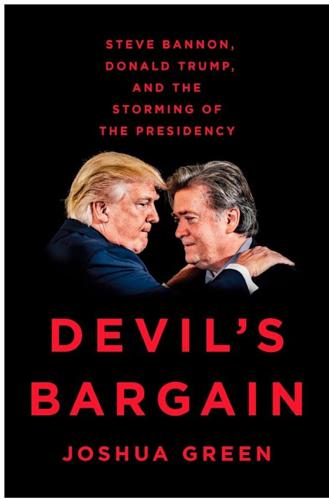
Devil's Bargain: Steve Bannon, Donald Trump, and the Storming of the Presidency
by
Joshua Green
Published 17 Jul 2017
In the meantime, we hung out at political events or at the Capitol Hill headquarters of Breitbart News, which he took over in 2012. Through the years, I discovered seemingly endless new dimensions (and contradictions): his admiration for Rachel Maddow, whom he considered a master of fact-based partisan polemics; his controversial stint overseeing the Biosphere 2 Project in Arizona; his deep interest in Christian mysticism and esoteric Hinduism; and his particular fascination with an obscure, early-twentieth-century French intellectual, René Guénon, who became a Muslim and observed the Sharia—a jarring contrast to the bombastic Islamophobia Bannon often espoused.
…
Abedin, Huma, 228 Access Hollywood, 8, 214, 217–19, 227–28 ACORN, 89–90, 144 Acosta, Jim, 1–2 Affinity Media, 82, 83 Affordable Care Act, 114, 115, 176, 238, 240 African Americans, 10, 96–99, 101, 103, 191 Ailes, Beth, 195 Ailes, Roger, 108–9, 167, 172, 174, 180–81, 184, 201 Bannon and, 172–74, 194–95 sexual harassment charges against, 194–96 Allen, Danny, 98 Allen, David, 62–63 alt-right, 83, 146–48, 211–12 Bannon and, 83, 146–47, 187, 211–14 Hillary Clinton on, 212–14, 232 Trump and, 147–48, 214, 222 Alwaleed bin Talal, Prince, 78 American Conservative Union, 124 American Crossroads, 123 American Spectator, 153 America We Deserve, The (Trump), 37 Anti-Defamation League (ADL), 9, 83, 148 anti-Semitism, 9, 83, 146n, 148, 190, 213, 222 Apatow, Judd, 34 Apprentice, The, 11, 38, 93–99, 101–4, 112, 166–67, 182, 191, 239 Artist Management Group (AMG), 80 Art of the Deal, The (Trump), 37 Associated Press (AP), 11, 18, 19 Astorino, Rob, 116 Atlantic, ix, 184 Atlantic City, N.J., 23–24 Bachmann, Michele, 21 Bannon, Chris, 50 Bannon, Doris, 49–50 Bannon, Martin, 19, 49–50, 88 Bannon, Steve: author’s meeting of, ix, xiii background and career of, x, 2, 5, 21, 48, 49–65 in college, 53–54 on Election Night, 3, 12–14, 16–18, 20 in entertainment and media industry, ix, x, 72–74, 79–89, 108, 132–34, 140, 142, 166 GAI and, 132–33, 141–42, 151, 156–57, 209 Goldman Sachs and, x, 2, 52, 63–65, 67, 69–74, 82, 84, 87, 140–42, 155 at Harvard, 60–65, 67, 68 in high school at Benedictine, 2, 50–53, 204 hobbies of, 119–20 immigration views of, 6, 46, 108, 111, 140, 208 national security degree of, 60 as naval officer, 2, 54–59, 62, 63, 65, 204 Pentagon position of, 59–60 physical appearance of, 2–3, 45, 140 populist-nationalist worldview of, x, xiii, 6, 21, 46, 52, 53, 93, 139–40, 145, 150, 204, 207, 208, 213–14, 222, 241 religious studies and views of, 204–7 as Trump’s campaign strategist, xi–xiii, 2–6, 9–11, 20–22, 53, 197, 200–203, 208–9, 211, 212, 236, 238, 241–42 Trump’s meeting of, 44–46, 93 “Uninvited” conference of, 124–25 Valkyries and, 149–50, 216 in video game industry, x, 81–83, 145–46 views on Islam, x, 51, 58, 84–85, 140, 207 White House role of, xi, 237–39 Bannon & Co., 74, 76–79 Beato, Greg, 91n Begala, Paul, 220–21 Benedict XVI, Pope, 134, 206 Benedictine College Preparatory, 2, 50–53, 204 Berlusconi, Silvio, 78 Bernadette, 75 Biosphere 2 Project, x Blankfein, Lloyd, 9 Blitzer, Wolf, 13, 38 Blizzard Entertainment, 82, 83 Bloomberg Businessweek, xi, xii, 19 Bloomberg News, 122n, 130 Bloomberg Politics–Des Moines Register Iowa poll, 181 Boehner, John, 4, 132, 175–77 Boisi, Geoff, 69–70 Border Wars: The Battle over Illegal Immigration, 87, 108 Bossie, David, xii, 6, 11, 25–32, 47, 114, 116, 200, 201, 209, 215, 221 Citizens United group of, 29–32, 111, 121, 123 Clintons and, 26, 27, 29–31 Trump and, 25, 31, 32, 42–44 Boston Globe, 158 Boyle, Matthew, 149, 163 Brat, David, 110 Brauchli, Marcus, 36 Breitbart, Andrew, 85–91, 130–31, 140, 143–44, 146, 213 death of, 46, 91, 108, 131 Breitbart London, 207 Breitbart News, 46, 72, 89–91, 108–10, 130–32, 135, 143–44, 147, 157, 160, 176, 177, 192, 195, 199, 213 Bannon’s leadership of, x, 4–6, 46, 81, 83, 90, 91, 108, 124–25, 131, 137–51, 164, 166, 183, 187–88, 203, 208, 212–13, 216 Fields and, 192 Fox News and, 171 Kelly and, 172–74 Mercers and, 130–32 Mexican immigration issues and Texas bureau of, 6, 108–10, 149, 163, 164 Trump and, 6, 46, 183 Breitbart Rome, 206 Brexit, 207, 226 Broaddrick, Juanita, 217 Brock, David, 153–54, 157 Brown, Peter, 127, 128, 130 Brzezinski, Mika, 173 Buress, Hannibal, 150 Burke, Raymond Cardinal, 206, 207 Burnett, Mark, 95 Burton, Dan, 25–28, 47, 141 Busey, Gary, 35, 36 Bush, Billy, 214 Bush, George H.
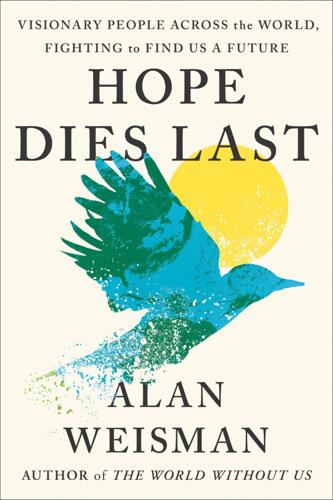
Hope Dies Last: Visionary People Across the World, Fighting to Find Us a Future
by
Alan Weisman
Published 21 Apr 2025
“But during COVID, food was scarce, so we bought seeds and tried this.” Some elders had criticized them, which Gary Nabhan kept in mind when proposing his latest project, which, after some discussion, the Comcáac agreed to. For the past three years, he and a geographer colleague had experimented with growing crops under photovoltaic panels north of Tucson at Biosphere 2, a privately funded 1990s experiment to re-create Earthly ecosystems under glass domes, robust enough for humans to survive someday on Mars. Although a two-year test failed—within months, eight Biospherians sealed inside were driven out by runaway CO2—it was an instructive reminder that believing human technology might ever replicate nature is the ultimate hubris.
…
A B C D E F G H I J K L M N O P Q R S T U V W X Y Z A Aboriginal Australians, 275 Abu Dhabi, 327, 328 Abu Haider, 14–16, 21–22, 23, 27 Aburrá Valley, 307 Adani, Gautam, 195 Advanced Research Projects Agency, 51, 286 Aeneid (Virgil), 275 aeroponics, 325 agriculture aeroponics and hydroponics, 325 and Bangladesh Delta Plan 2100, 205, 206 and biological production of nitrogen, 226–41 climate and food security risks, 45–46 and dairy farming, 150, 156, 221–25, 286, 288, 294, 402 and dredging projects, 186–87 Dutch agricultural capacity, 150 energy requirements of modern farming, 57–58 impact of atmospheric carbon dioxide, 130 and Iraqi wetlands, 22–23 monocultured crops, 49, 239, 281, 296, 387 and nitrogen-fixing bacteria, 223, 229–33, 236–41 and nitrogen runoff, 112 origins and spread of, 13, 36–37 and photovoltaic power, 261–62 seaweed farming, 276–77, 279–80, 282–84, 285–90, 290–93, 294–99 and synthetic fertilizer, 39–41, 46–48 See also corn farming AgriSeas, 294–95, 298 Aguirre-Torres, Luis, 308–19 Air Protein Inc., 55 Akkadian culture, 8, 14, 31 Alam, Mashiat Fariha, 217 Al-Asadi, Jassim, 14–15, 18–20, 21–25, 27–28, 31, 390–92, 396–97 Al-Asadi, Souad, 396 Alaskan Willow Project, 379 Alberta tar sands, 167, 169, 172 Alcator C-Mod reactor, 91–92 Algonquian-speaking peoples, 161–62, 162n Ali ibn Abi Talib, 8, 393–94 ALLIES (Alliance Linking Leaders in Education and the Services), 341 Alwash, Azzam, 1–3, 6–8, 10, 14, 16–22, 24–28, 31, 390–92 Amazon rainforest, 375–76 Amazon River, 112 American Indian Movement, 177 America the Beautiful, 388 Andros, Bahamas, 108 Animal Legal Defense Fund, 78 Anishinaabeg people, 161, 164–65, 174, 177, 181–83 Anjain, Jelton, 331–32, 335–36, 341–45, 348–49, 353, 356–57 Anjain, Jeton, 335–36 Anjain, John, 334–36, 356 Anjain, Ranton, 356 Ann Bancroft Award, 177 Ansari, Mohammad Hussein al-, 394–95, 400 Aponiente, 247, 249–51, 264–65, 267–71 Appendini, Christian Mario, 118, 119–20 Applied Physics Lab (APL), 55–58 aquifers, 178, 236, 255 Arabian-Persian Gulf, 1, 6, 10, 13, 27 Araque, Carlos, 373 ARC fusion reactor, 95–97, 103 Ariza, Ricardo, 265–66, 271 Arkema, Katie, 105–7, 110, 116, 120, 124, 126, 297 Aros River, 71–72 artificial intelligence, 287, 359, 362–65, 369 art installations, 365–71 Asian Development Bank, 205, 340 Assyrian culture, 12, 14 asteroid impacts, 33, 121, 386 Atlantic Meridional Overturning Circulation, 144–45 Atlantic Sea Farms, 289, 291 Atoms for Peace, 97 Atwood, Keith, 293–94 Audubon Society, 69, 74 aurochs, 37 Australopithecus, 8, 104 B Babylonian culture, 14, 23–24 Babylonian Talmud, 12, 392 Bahía de Cádiz, 243, 247–51, 263–67 Bahía de Kino, 255, 259 Baird, Donnel, 314 Baja California, 242–45, 242n, 243 balsas (Seri boats), 245–46, 246n, 255–57 Ban, Shigeru, 367, 370 Bangladesh Delta Plan 2100, 147, 149–50, 188, 191, 197, 201–8, 216 Bangladesh India Friendship Power Company, 195 Bangladesh Poribesh Andolon (BAPA), 185, 185n Bangladesh Rice Research Institute, 185 Banishanta, Bangladesh, 184–86, 190, 196, 201 Ban Ki-moon, 321 Bank of America, 381 Bardaglio, Peter, 316–18 Barnacle Foods, 285 Barnett, Chapo, 257, 260 Barnett, Erika, 257–59, 261, 262–63 Barnett, Miguel, 257 Barra del Motagua, 125 Barrio Bread, 259 Bartlett, Ryan, 110–12, 114, 126–27 Baskerville Willy, 44, 61 Basra, Iraq, 1, 4, 4–7, 17, 339, 372, 396 Basra reed warbler, 20, 397 Bayer-Monsanto, 229 Bay of Bengal, 184, 192, 194–96, 198 Beaudreau, Tommy, 379 Beaulieu, Nancy, 170 Behmann, Sebastian, 368 Bellecourt, Vernon, 177 Bellrock, Nick, 180 Belt and Road Initiative, 203, 215 Bengal tigers, 190, 199, 200–201 Benioff, Marc, 231 Bermúdez, Juan Martín, 246 Bezos, Jeff, 96, 231 Bible, 8, 10–12, 29–32, 392–93 Biden, Joe, 25, 169–70, 172, 377, 380, 384 Bikini Atoll, 332, 333, 336n Bill and Melinda Gates Foundation, 228 Billion Oyster Project, 191, 323, 329 BioCube, 293 biodiversity, 24, 31–32, 63, 191–92 biofuels, 48, 286 bioreactors, 55n, 56–57 Biorock, 328 Biosphere 2, 261 biostimulants, 295 Biotechnology and Biological Sciences Research Council (UK), 46 bitumen, 24, 167 Bjarke Ingels Group (BIG), 133, 323–29 bKash, 219 Black River Valley, 221 Bloch, Sarah, 229 BlocPower, 313–14, 316 Bloomberg, Michael, 133–34, 231 Bloomberg Green Summit, 315 Blue Carbon, 292 bore-hole generators, 373–74 Borlaug, Norman, 40, 183 Bosch, Carl, 39 Bradley, Clare, 294, 296 Bradley, Jill, 293–94 Bradley, Tane, 293–96 Brahmaputra River, 149, 193, 202–3, 205, 207 Branson, Richard, 231 Breakthrough Energy Ventures, 220, 231 Briganti, Chelsea (“Sea”) Fawn, 291–93 Brilliant, Larry, 339 brown spiny kelp, 294 Buckminster Fuller Institute, 284 buffalo (bison), 174, 182, 391 Build Back Better Plan, 284 Building with Nature, 191 Bureau of Land Management, 76 Busan, South Korea, 328–29 C Cabrera, Gustavo, 124–26, 127 cactus ferruginous pygmy owl, 78, 82 Cádiz Bay, 247–48 California Institute of Technology (Caltech), 358 Campbell, Taonui, 294 Canal de Infiernillo, 263 cancers, 6, 37, 81, 238–39, 276n, 279, 335–36, 356, 380 cannabis cultivation, 181–82 carageenen, 276, 276n carbon and carbon dioxide atmospheric CO2, 56, 57, 118, 129–30 and Biosphere 2 experiment, 261 carbon capture technology, 276 carbon credits, 287, 291, 359 carbon neutrality goals, 359 and cement production, 202 and concentration measures, 113 decarbonization efforts, 313, 315, 318, 361, 376 direct carbon capture, 361 emissions rates, 34–35, 192 and Framework Convention on Climate Change, 154–55 and Haber-Bosch process, 228 hydrocarbons, 290–91 impact on climate, 34 lawsuits, 156–57 and microbial farming, 53–57 oceanic CO2 absorption, 361, 364 and pipeline dangers, 175 primary emitters of, 59 sequestration of, 118–19, 250, 258, 283, 286, 290–92, 299 Carboniferous layer, 34 cattle, 37–38, 73.
…
A B C D E F G H I J K L M N O P Q R S T U V W X Y Z A Aboriginal Australians, 275 Abu Dhabi, 327, 328 Abu Haider, 14–16, 21–22, 23, 27 Aburrá Valley, 307 Adani, Gautam, 195 Advanced Research Projects Agency, 51, 286 Aeneid (Virgil), 275 aeroponics, 325 agriculture aeroponics and hydroponics, 325 and Bangladesh Delta Plan 2100, 205, 206 and biological production of nitrogen, 226–41 climate and food security risks, 45–46 and dairy farming, 150, 156, 221–25, 286, 288, 294, 402 and dredging projects, 186–87 Dutch agricultural capacity, 150 energy requirements of modern farming, 57–58 impact of atmospheric carbon dioxide, 130 and Iraqi wetlands, 22–23 monocultured crops, 49, 239, 281, 296, 387 and nitrogen-fixing bacteria, 223, 229–33, 236–41 and nitrogen runoff, 112 origins and spread of, 13, 36–37 and photovoltaic power, 261–62 seaweed farming, 276–77, 279–80, 282–84, 285–90, 290–93, 294–99 and synthetic fertilizer, 39–41, 46–48 See also corn farming AgriSeas, 294–95, 298 Aguirre-Torres, Luis, 308–19 Air Protein Inc., 55 Akkadian culture, 8, 14, 31 Alam, Mashiat Fariha, 217 Al-Asadi, Jassim, 14–15, 18–20, 21–25, 27–28, 31, 390–92, 396–97 Al-Asadi, Souad, 396 Alaskan Willow Project, 379 Alberta tar sands, 167, 169, 172 Alcator C-Mod reactor, 91–92 Algonquian-speaking peoples, 161–62, 162n Ali ibn Abi Talib, 8, 393–94 ALLIES (Alliance Linking Leaders in Education and the Services), 341 Alwash, Azzam, 1–3, 6–8, 10, 14, 16–22, 24–28, 31, 390–92 Amazon rainforest, 375–76 Amazon River, 112 American Indian Movement, 177 America the Beautiful, 388 Andros, Bahamas, 108 Animal Legal Defense Fund, 78 Anishinaabeg people, 161, 164–65, 174, 177, 181–83 Anjain, Jelton, 331–32, 335–36, 341–45, 348–49, 353, 356–57 Anjain, Jeton, 335–36 Anjain, John, 334–36, 356 Anjain, Ranton, 356 Ann Bancroft Award, 177 Ansari, Mohammad Hussein al-, 394–95, 400 Aponiente, 247, 249–51, 264–65, 267–71 Appendini, Christian Mario, 118, 119–20 Applied Physics Lab (APL), 55–58 aquifers, 178, 236, 255 Arabian-Persian Gulf, 1, 6, 10, 13, 27 Araque, Carlos, 373 ARC fusion reactor, 95–97, 103 Ariza, Ricardo, 265–66, 271 Arkema, Katie, 105–7, 110, 116, 120, 124, 126, 297 Aros River, 71–72 artificial intelligence, 287, 359, 362–65, 369 art installations, 365–71 Asian Development Bank, 205, 340 Assyrian culture, 12, 14 asteroid impacts, 33, 121, 386 Atlantic Meridional Overturning Circulation, 144–45 Atlantic Sea Farms, 289, 291 Atoms for Peace, 97 Atwood, Keith, 293–94 Audubon Society, 69, 74 aurochs, 37 Australopithecus, 8, 104 B Babylonian culture, 14, 23–24 Babylonian Talmud, 12, 392 Bahía de Cádiz, 243, 247–51, 263–67 Bahía de Kino, 255, 259 Baird, Donnel, 314 Baja California, 242–45, 242n, 243 balsas (Seri boats), 245–46, 246n, 255–57 Ban, Shigeru, 367, 370 Bangladesh Delta Plan 2100, 147, 149–50, 188, 191, 197, 201–8, 216 Bangladesh India Friendship Power Company, 195 Bangladesh Poribesh Andolon (BAPA), 185, 185n Bangladesh Rice Research Institute, 185 Banishanta, Bangladesh, 184–86, 190, 196, 201 Ban Ki-moon, 321 Bank of America, 381 Bardaglio, Peter, 316–18 Barnacle Foods, 285 Barnett, Chapo, 257, 260 Barnett, Erika, 257–59, 261, 262–63 Barnett, Miguel, 257 Barra del Motagua, 125 Barrio Bread, 259 Bartlett, Ryan, 110–12, 114, 126–27 Baskerville Willy, 44, 61 Basra, Iraq, 1, 4, 4–7, 17, 339, 372, 396 Basra reed warbler, 20, 397 Bayer-Monsanto, 229 Bay of Bengal, 184, 192, 194–96, 198 Beaudreau, Tommy, 379 Beaulieu, Nancy, 170 Behmann, Sebastian, 368 Bellecourt, Vernon, 177 Bellrock, Nick, 180 Belt and Road Initiative, 203, 215 Bengal tigers, 190, 199, 200–201 Benioff, Marc, 231 Bermúdez, Juan Martín, 246 Bezos, Jeff, 96, 231 Bible, 8, 10–12, 29–32, 392–93 Biden, Joe, 25, 169–70, 172, 377, 380, 384 Bikini Atoll, 332, 333, 336n Bill and Melinda Gates Foundation, 228 Billion Oyster Project, 191, 323, 329 BioCube, 293 biodiversity, 24, 31–32, 63, 191–92 biofuels, 48, 286 bioreactors, 55n, 56–57 Biorock, 328 Biosphere 2, 261 biostimulants, 295 Biotechnology and Biological Sciences Research Council (UK), 46 bitumen, 24, 167 Bjarke Ingels Group (BIG), 133, 323–29 bKash, 219 Black River Valley, 221 Bloch, Sarah, 229 BlocPower, 313–14, 316 Bloomberg, Michael, 133–34, 231 Bloomberg Green Summit, 315 Blue Carbon, 292 bore-hole generators, 373–74 Borlaug, Norman, 40, 183 Bosch, Carl, 39 Bradley, Clare, 294, 296 Bradley, Jill, 293–94 Bradley, Tane, 293–96 Brahmaputra River, 149, 193, 202–3, 205, 207 Branson, Richard, 231 Breakthrough Energy Ventures, 220, 231 Briganti, Chelsea (“Sea”) Fawn, 291–93 Brilliant, Larry, 339 brown spiny kelp, 294 Buckminster Fuller Institute, 284 buffalo (bison), 174, 182, 391 Build Back Better Plan, 284 Building with Nature, 191 Bureau of Land Management, 76 Busan, South Korea, 328–29 C Cabrera, Gustavo, 124–26, 127 cactus ferruginous pygmy owl, 78, 82 Cádiz Bay, 247–48 California Institute of Technology (Caltech), 358 Campbell, Taonui, 294 Canal de Infiernillo, 263 cancers, 6, 37, 81, 238–39, 276n, 279, 335–36, 356, 380 cannabis cultivation, 181–82 carageenen, 276, 276n carbon and carbon dioxide atmospheric CO2, 56, 57, 118, 129–30 and Biosphere 2 experiment, 261 carbon capture technology, 276 carbon credits, 287, 291, 359 carbon neutrality goals, 359 and cement production, 202 and concentration measures, 113 decarbonization efforts, 313, 315, 318, 361, 376 direct carbon capture, 361 emissions rates, 34–35, 192 and Framework Convention on Climate Change, 154–55 and Haber-Bosch process, 228 hydrocarbons, 290–91 impact on climate, 34 lawsuits, 156–57 and microbial farming, 53–57 oceanic CO2 absorption, 361, 364 and pipeline dangers, 175 primary emitters of, 59 sequestration of, 118–19, 250, 258, 283, 286, 290–92, 299 Carboniferous layer, 34 cattle, 37–38, 73.
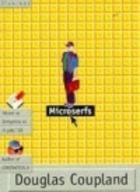
Microserfs
by
Douglas Coupland
Published 14 Feb 1995
All these little fears: fear of not producing enough; fear of not finding a little white-with-red-printing stock option envelope in the pigeonhole; fear of losing the sensation of actually making something anymore; fear about the slow erosion of perks within the company; fear that the growth years will never return again; fear that the bottom line is the only thing that really drives the process; fear of disposability . . . God, listen to me. What a downer. But sometimes I think it would be so much easier to be jerking espressos in Lynwood, leaving the Tupperware-sealed, Biosphere 2-like atmosphere of Microsoft behind me. And this got me thinking. I looked around and noticed that if you took all of the living things on the Microsoft Campus, separated them into piles, and analyzed the biomass, it would come out to: • 38% Kentucky bluegrass • 19% human beings • .003% Bill • 8% Douglas and balsam fir • 7% Western red cedar • 5% hemlock • 23% other: crows, birch, insects, worms, microbes, nerd aquarium fish, decorator plants in the lobbies
…
* * * Along I-5, just outside a suburb of Eugene, Oregon, there were all of these houses for sale next to the freeway, and they were putting these desperate signs up to flog them: if you lived here, you would be home right now. Karla honked the horn, waved out the window of the Microbus and pointed at the sign. Convoy humor. We made this rule that we had to honk every time we spotted road kill, and we nearly burned out our horns. * * * On a diner TV set we saw that in Arizona, the eight men and women of Biosphere 2 emerged into the real world after spending two years in a hermetically sealed, self-referential, self-sufficient environment. I certainly empathized with them. And their uniforms were like Star Trek. * * * We switched vehicles and I drove Karla's Microbus for a while, but the Panasonic rice cooker in the rear filled with rattling cassette tapes drove me nuts.

The Stack: On Software and Sovereignty
by
Benjamin H. Bratton
Published 19 Feb 2016
If it is not breached and remains a vacuum, then the findings will have diminished significance outside the artificially hermetic environment. If data or some other aspect of the Island microsociety were to leak out, or some of the outside world to link in, on a regular basis, as happened with Biosphere 2 in the Arizona desert, then the experimental noninterference would be breached, to whatever significant or insignificant degree. If breached, then the island is really just one locus among many others in “the whole world,” one that may layer experiments one on another in dense concentration, but one that does what it does in direct (if filtered) relationship with other enclaves and camps.
…
Synthetic computation shifts what can be sensed, measured, calculated, communicated, or stored and performs feats of organizational cognition at a scale and speed previously unknown. There is a productive and generous cannibalism in this. For some, the friend-enemy distinction is rationalized by the ambiance of vast indoor airport cities, thousands of them each supporting hundreds of millions of people, most skirted by lethal security prophylactics.5 Recall that the Biosphere 2 experiment did have a winner. It was the ants that beat back the cockroaches that made the humans go insane.6 The lesson is that inside a domed totality, massively distributed single-mindedness may be a better evolutionary adaptation than individuated nuanced thinking, and so Google charter cities may be drawn more by stigmergic chemical communication than by glassy formal algorithms.
…
Maan News Agency, August 28, 2011, http://www.maannews.net/eng/viewdetails.aspx?id=416597. 5. O. Wainwright, “The World's First Indoor City: A Greatest Hits Mashup of London and New York,” The Guardian, July 9, 2014, http://www.theguardian.com/artanddesign/architecture-design-blog/2014/jul/09/worlds-first-indoor-city-dubai-mall-of-the-world. 6. “Biosphere 2 was a giant sealed world. Eight humans were locked in with a mass of flora and other fauna, and a balanced ecosystem was supposed to naturally emerge. But from the start it was completely unbalanced. The CO2 levels started soaring, so the experimenters desperately planted more green plants, but the CO2 continued to rise, then dissolved in the ‘ocean’ and ate their precious coral reef.
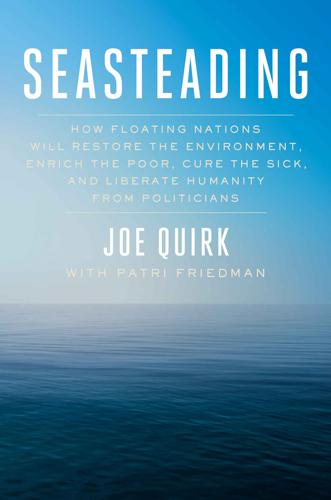
Seasteading: How Floating Nations Will Restore the Environment, Enrich the Poor, Cure the Sick, and Liberate Humanity From Politicians
by
Joe Quirk
and
Patri Friedman
Published 21 Mar 2017
Sarkum’s out-of-the-box vision earned an honorable mention in eVolo magazine’s 2010 Skyscraper Competition which invites architects to design skyscrapers to solve technological or environmental problems, and it’s attracted more attention than the winners. Speaking of the oceans as “covering more than two-thirds of the Earth’s surface” radically understates the available space in the oceans for colonization. Thirty feet below the surface, waves are not much of a factor. British designer Phil Pauley has developed Sub-Biosphere 2, composed of interconnected spherical modules that could submerge during storms and float at the surface in good weather. This underwater habitat is meant to sustain all life support systems for air, water, food, and electricity by controlling the variant atmospheric pressures that occur at depth.
…
Anna’s Medical Mission, 242 Star Trek (tv show), 169 start-ups, 28, 30, 36, 37, 140, 148, 216, 228–29, 236 see also specific start-ups stem cell treatment, 238–39 Stephens, Donald, 233 Stephens, Keyon, 233 Stiglitz, Joseph E., 204 Story of Civilization, The (Durant), 289 strategic incrementalism, 59 Straub, Mike, 154 Strong, Michael, 188, 197, 198–99 Sub-Biosphere 2, 173 subsidies, 93 Summers, Larry, 27 Summer Youth Olympics, 9 Sun Microsystems, 29 surveys, 11, 50, 57–59 sushi, 116 Swaminathan, Monkombu Sambasivan, 68 swordfish, 104, 157 symbiosis, 49 Synopsys, 131 Tahiti, 149 Tahiti Field (oil production platform), 19 Taiwan, 157, 195 Takahashi, Patrick Kenji, 54 on closing growth cycle, 122, 143, 158 on floating cities, 143, 144 on hurricanes, 158–59 influence on Blue Revolution, 56, 126–27, 143 introduces Hard Minerals Act, 159–60 on oceans as solar collectors, 144–49 on OTEC, 149–52, 156, 158 on whale sharks, 157–58, 159 Takeuchi, Massaki, 174, 176, 179 Tanka people, 267 Tao Ju, 168 taxes, 260–61 Taylor, Brad, 284 TechCrunch Disrupt (conference), 26 TEDMED (medical conference), 167 telemedicine, 221, 232, 241 teosinte, 81 TerraVia (formerly Solazyme), 135 territorial waters, 11, 13, 264, 270 Tesla Motors, 29, 169 Tetanus (spinoff from Ephemerisle), 35 Thailand, 19, 90, 176, 227 thalassocracy, 267 “thalassophilanthropy,” 23 thalassotherapy, 23 Thiel, Peter, 27–29, 38, 57, 169, 212–13, 216, 241, 263 Thiel Fellowship, 27 Thiel Foundation, 29, 57, 58, 288 3-D printing, 167–71 Time, 121 Titan (spinoff from Ephemerisle), 34–35, 36 Titanic (movie), 124 Titanic (ship), 65, 120, 161 Tocqueville, Alexis de, 214 tofu, 114 tofu shark, 157 Tokyo Bay, 9, 175 Tokyo Bay Aqua-Line, 173 topsoil, 82 Touchstone Research Laboratory, 76 “Tragedy of the Commons, The” (Hardin), 106 Transcend Biomedical, 131 Triton City (floating city), 24 trochus (sea snail), 107 trophic steps, 111, 122, 133, 157, 163 Tsukiji Hotel, 173 tsunamis, 257–58 Tufts Energy Competition, 213 tuna, 104, 111, 157 20 Under 20 community, 216 TwoXSea, 116 typhoons, 12, 172, 173 Ultimate Resource The (Simon), 7 Umihotaru (artificial island), 173 Undercurrent News, 127 Unilever, 70, 135 United Nations: Convention on the Law of the Sea (UNCLOS), 13, 264 Food and Agriculture Organization, 49, 70, 104, 158 Human Development Index (HDI), 201, 295 International Labor Organization (ILO), 265 and international law, 303 International Tribunal on Maritime Law, 264–65 political entities in, 265 sovereignty for seasteaders, 17, 177 Third Global Biodiversity Outlook, 104 UNESCO (United Nations Educational, Scientific, and Cultural Organization), 259 UNICEF (United Nations Children’s Fund), 238 on water use, 67, 68 World Environment Day, 132 Uptightan (spinoff from Ephemerisle), 34–37 urchins, 84 United States, health care costs in, 221–25, 226 US Compassionate Home Health City, 233 US Oosterschelde Barrier, 41 US Steel, 137 van Buren, Remko, 43–44 van de Camp, Paul, 25, 26 van Dongen, Teresa, 261 van Helmont, Jean-Bapiste, 73 Velella (hydrozoan), 118 Velella Mariculture Research Project, 115, 118–21, 149 Venice, 267–68, 283 Venter, Craig, 122 VeriFone, 131 video cameras, 23 Virage, 130 Virgin Group, 268 Virtual Watch Room, 262 Vivaldi, Antonio, 268 Wachowiak, Helmut, 222 Wachtstetter, Lee, 16–17 Wall Street Journal, 231 Wang, Ning, 290 War of the Worlds, The (movie), 272 wars, 132, 166, 267, 270 Washington, George, 287, 290 wastewater treatment plants, 43 water, 5, 65, 67–68, 260 water bankruptcy, 67 Waterstudio, 9, 21, 25, 44, 45–46, 172 Waterworld (movie), 272 wave energy converters, 18 websites, 10, 57, 84, 121, 177, 235, 246, 248, 265 see also specific websites Wei, Peter, 225–28 Weinger, Paul, 59 Welthungerhilfe (World Hunger Aid), 85 whale sharks, 157–58, 159 wheat, 68, 78–79, 80, 81, 92, 139 Wheat Revolution, 92 Willauer, Heather, 136 Williams, John, 136 wind turbines, 18, 261 WineBid, 265 WinSun, 168 Wisconsin State Journal, 229 Wolff, James, 170 Wolf Hilbertz process, 178–79 Wong, Alan, 116 Woodman, Josef, 223 World Bank, 70, 72, 128, 185, 188, 191, 201, 203, 298 World Development Report 2000/2001: Attacking Poverty, 69 World Economic Forum, 204, 206 World Health Organization, 234 World Hunger Aid (Welthungerhilfe), 85 Worlds in Transition: Evolving Governance Across a Stressed Planet (Camilleri & Falk), 280 World Wildlife Fund, 127 Wright, Orville, 38 Xiaogang Village, 214–15 XPRIZE Foundation, 65 Xu Xiaoping, 216 Yammer, 28, 29 Yelp, 28, 29 YouTube, 29, 212 Zafar, Ali, 203 Zanzibar, 85, 89, 155 Zhai, Baoguang, 122, 209–16 ZhenFund, 216 Zocdoc, 28 Zuckerberg, Mark, 212, 235 Zynga, 28 Free Press An Imprint of Simon & Schuster, Inc. 1230 Avenue of the Americas New York, NY 10020 www.SimonandSchuster.com Copyright © 2017 by The Seasteading Institute All rights reserved, including the right to reproduce this book or portions thereof in any form whatsoever.

More Everything Forever: AI Overlords, Space Empires, and Silicon Valley's Crusade to Control the Fate of Humanity
by
Adam Becker
Published 14 Jun 2025
That closed ecosystem would need to have plants and microbes (and maybe insects) in order to provide you with the oxygen and food you need to stay alive. In theory, this should work. In practice, nobody has ever done this successfully on a human scale. The highest-profile attempt to create a closed ecosystem with humans in it, Biosphere 2 outside of Tucson, Arizona, had a troubled first mission—oxygen levels dropped steadily over the two years of the experiment—and a second and final mission that ended prematurely. Human factors contributed to the problems there (including the involvement of one Steve Bannon), but it’s clear that properly balancing out an entirely isolated ecosystem is a difficult thing to do.67 It would be even harder on Mars, where there’s virtually no oxygen in the air, less than half as much sunlight, and no soil.
…
See also, Nick Lucchesi, “Elon Musk Calls on the Public to ‘Preserve Human Consciousness’ with Starship,” Inverse, September 28, 2019, www.inverse.com/article/59676-spacex-starship-presentation. 62 George Dvorsky, “Elon Musk’s Plan to Send a Million Colonists to Mars by 2050 Is Pure Delusion,” Gizmodo, June 3, 2022, https://gizmodo.com/elon-musk-mars-colony-delusion-1848839584. 63 Elon Musk (@elonmusk), Twitter (now X), March 15, 2024, https://twitter.com/elonmusk/status/1768810190718009446. 64 Kenneth Chang, “Elon Musk Sets Out SpaceX Starship’s Ambitious Launch Timeline,” New York Times, September 28, 2019, updated May 5, 2021, www.nytimes.com/2019/09/28/science/elon-musk-spacex-starship.html. 65 Mrigakshi Dixit, “How Space Radiation Threatens Lunar Exploration,” Smithsonian Magazine, January 18, 2023, www.smithsonianmag.com/science-nature/how-space-radiation-threatens-lunar-exploration-180981415/. 66 “Steady Temperatures at Mars’ Gale Crater,” NASA, April 8, 2013, https://science.nasa.gov/resource/steady-temperatures-at-mars-gale-crater/. 67 Carl Zimmer, “The Lost History of One of the World’s Strangest Science Experiments,” New York Times, March 29, 2019, www.nytimes.com/2019/03/29/sunday-review/biosphere-2-climate-change.html. 68 Taylor Locke, “Elon Musk on Planning for Mars: ‘The City Has to Survive if the Resupply Ships Stop Coming from Earth,’” CNBC, March 9, 2020, updated January 12, 2021, www.cnbc.com/2020/03/09/spacex-plans-how-elon-musk-see-life-on-mars.html; Eric Berger, “Inside Elon Musk’s Plan to Build One Starship a Week—and Settle Mars,” Ars Technica, March 5, 2020, https://arstechnica.com/science/2020/03/inside-elon-musks-plan-to-build-one-starship-a-week-and-settle-mars/; Mike Brown, “SpaceX Mars City: Elon Musk Details 1 Test Its Success Depends On,” Inverse, October 19, 2020, updated February 20, 2024, www.inverse.com/innovation/spacex-mars-city-test. 69 Paul Krugman, “Elon Musk, Mars and the Modern Economy,” New York Times, June 7, 2022, www.nytimes.com/2022/06/07/opinion/musk-mars-twitter.html; Charles Stross, “Insufficient Data,” Charlie’s Diary (blog), July 23, 2010, www.antipope.org/charlie/blog-static/2010/07/insufficient-data.html. 70 Elon Musk, “Elon Musk Might Be a Super Villain,” interview by Stephen Colbert, Late Show with Stephen Colbert, video, YouTube, September 10, 2015, www.youtube.com/watch?

The Fifth Risk
by
Michael Lewis
Published 1 Oct 2018
She found all sorts of odd groups, outsiders to the space project, unknown to the astronauts’ families, who might be relevant to the new mission: teachers, museum professionals, curriculum supervisors, textbook publishers, exhibition designers, video-tech types, and so on. Plus, an architect. She gathered all these people in Biosphere 2, in Oracle, Arizona, “to get everyone out of their ruts.” Pretty quickly the architect turned the event into a presentation of his plan for the building. Kathy and the others could see that he hadn’t listened to a word anyone had said. She let him go the next day. In the end, the group discussion led to a course aimed at middle-school students.
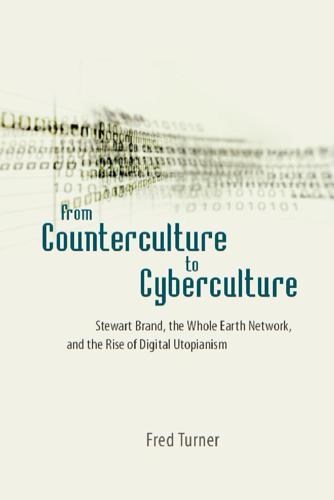
From Counterculture to Cyberculture: Stewart Brand, the Whole Earth Network, and the Rise of Digital Utopianism
by
Fred Turner
Published 31 Aug 2006
Now, in the late 1980s, as the cold war wound to a close, Brand, de Geus, and Schwartz melded countercultural and cybernetic rhetoric, practice, and social theory to help corporate executives model and manage their work lives in a post-Fordist economy. In keeping with Brand and de Geus’s first discussions, the six semiannual Learning Conferences were designed to explore the dynamics of group learning. Brand staged the events in environments that he considered to be “learning systems” in their own right. One meeting took place at Biosphere 2 in the Arizona desert; another involved a visit to Danny Hillis’s Thinking Machines Corporation in Cambridge, Massachusetts; a third brought participants to the Esalen Institute in Big Sur. Like the Media Lab, these sites were meant to be both material and metaphorical. That is, they would allow participants to simultaneously study and engage with a “system” as it learned.
…
Over its first ten years, GBN held more than thirty meetings. Some meeting themes, such as “Environmental Technology” (for a gathering held in 1991 at the Monterey Bay Aquarium) or “Business and Social Responsibility” (for one at The Hague in 1997), reflected long-standing countercultural concerns. Others, such as “Environment as Infrastructure” (held at Biosphere 2 in 1990) and “Complex Adaptive Systems” (at the Santa Fe Institute in 1991), reflected GBN’s ongoing concern with the legacy of cybernetics. Most, however, brought elements of both those traditions to bear on questions of economic change. Networking the New Economy [ 191 ] “The Network Corporation,” “The Future of Information Services,” “Risk Within and Beyond the Organization,” and “Restructuring the Global Economy” are just a few of the themes around which meetings were organized in the early 1990s.

Fewer, Better Things: The Hidden Wisdom of Objects
by
Glenn Adamson
Published 6 Aug 2018
Atkins, ed., Wearing Propaganda: Textiles on the Home Front in Japan, Britain, and the United States (New York: Bard Graduate Center/Yale University Press, 2005), pp. 214–15. 6 Julie Jackson, “Subversive Finds: Hidden Cross-Stitched Messages from a Nazi POW,” Make: (December 21, 2011). Casdagli’s sampler was displayed in the exhibition Power of Making at the Victoria and Albert Museum in 2011. 7 The best-known such experiment is Biosphere 2, constructed in Arizona between 1987 and 1991. For a recent fictional account of life inside such a facility, see T. C. Boyle, The Terranauts (New York: Ecco/HarperCollins, 2016). 8 This passage and direct quotes are drawn from an interview with Constance Adams conducted on September 2, 2016. 9 See Constance Adams, “Techne and Logos at the Edge of Space,” in Louise Valentine, ed., Prototype: Design and Craft in the 21st Century (London: Bloomsbury, 2013).

Survival of the Richest: Escape Fantasies of the Tech Billionaires
by
Douglas Rushkoff
Published 7 Sep 2022
Notes Introduction: Meet The Mindset 5 Elon Musk colonizing Mars : Mike Wall, “Mars Colony Would Be a Hedge against World War III, Elon Musk Says,” Space.com , March 28, 2018, https:// www .space .com /40112 -elon -musk -mars -colony -world -war -3 .html. 5 Peter Thiel reversing the aging process : Maya Kossoff, “Peter Thiel Wants to Inject Himself with Young People’s Blood,” Vanity Fair , August 1, 2016, 2021, https:// www .vanityfair .com /news /2016 /08 /peter -thiel -wants -to -inject -himself -with -young -peoples -blood. 5 uploading their minds : Alexandra Richards, “Silicon Valley billionaire pays company thousands ‘to be killed and have his brain digitally preserved forever,’ ” Evening Standard , March 15, 2018, https:// www .standard .co .uk /news /world /silicon -valley -billionaire -pays -company -thousands -to -kill -him -and -preserve -his -brain -forever -a3790871 .html. 8 “fairer” phones : Bas Van Abel, interview with Douglas Rushkoff, Team Human podcast, March 29, 2017, https:// www .teamhuman .fm /episodes /ep -30 -bas -van -abel -fingerprints -on -the -touchscreen. 10 cars into space : Joel Gunter, “Elon Musk: The Man Who Sent His Sports Car into Space,” BBC , February 10, 2018, https:// www .bbc .com /news /science -environment -42992143. 10 Biosphere trials : Steve Rose, “Eight Go Mad in Arizona: How a Lockdown Experiment Went Horribly Wrong,” Guardian , July 13, 2020, https:// www .theguardian .com /film /2020 /jul /13 /spaceship -earth -arizona -biosphere -2 -lockdown. Chapter 1: The Insulation Equation 13 posted an article : Douglas Rushkoff, “Survival of the Richest: The Wealthy Are Plotting to Leave Us Behind,” Medium , July 5, 2018, https:// onezero .medium .com /survival -of -the -richest -9ef6cddd0cc1. 16 publishes pieces : J.
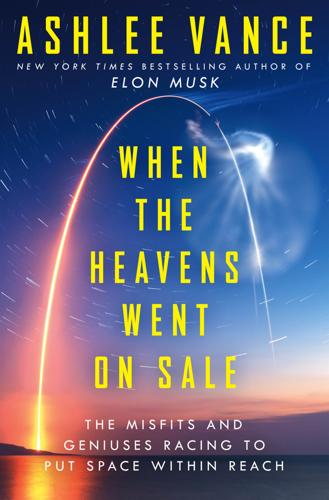
When the Heavens Went on Sale: The Misfits and Geniuses Racing to Put Space Within Reach
by
Ashlee Vance
Published 8 May 2023
Every New Year’s, we find a site for the event. Ideally, the site will be a place that humanity has built that reflects something larger than life. We went to the Arecibo Observatory once, where the world’s largest telescope is in the middle of a jungle, and we took it over. We had another one at the Biosphere 2 complex, which is a set of glass pyramids in the desert that have jungles and oceans and deserts inside of them. It was airtight and completely separate from the outside world. We broke into it, of course, and took that over, too. These are places where I think we can truly reflect on what people are capable of doing.
…
“Pete” Beck and, 207 espionage accusations and, 68 Google and, 58, 61, 64–65 growth of, 42–43 LADEE and, 57 lunar lander and, 55–57 Anisimov, Artiom, 403, 430–432, 447–448, 456, 460, 461, 465, 468, 476 Antares rockets, 29, 95, 104, 445, 493n “antigravity device,” 414 Antonov cargo plane, 446n Apollo mission, 42 Arecibo Observatory, 274 artificial intelligence (AI), image analysis and, 120–122 Astra in Alaska, 319–336, 338–354 attention given to, 317 engine tests at, 301–303 financial issues and, 326, 327, 370–374, 378, 379, 381–382 funding and, 365, 366, 383 goals of, 309–310, 364, 384 going public, 385–391, 393–394 growth of, 300 headquarters of, 397 Kemp and, 59 launch attempts and, 360–361, 375–376, 379–383, 391–393 “Launch Challenge” and, 369–370, 374–375 launch delays and, 326–334, 338 launch dress rehearsal and, 329–331 launch failures and, 335–336, 340–343, 345, 347, 349–354, 363–364 launch locations and, 303–304 launch process and, 345–347 moving rocket and, 302–306 name change to, 294 offices of, 310–311, 368 race to reach orbit and, 230 recent work of, 491–493 Rocket 2 and, 337–354 Rocket 3 and, 395 Rocket Lab and, 337–338, 349–350, 365 RV camp at, 355–358 security and, 301 Skyhawk space and, 367–369 static fire test and, 314–318 Atchison, Tom, 90–91 Ātea-1, 186–193, 195 autism spectrum, image analysts and, 119 Baiknour Cosmodrome, 442 Balls, 90 Beal, Andrew, 418 Beal Aerospace, 418 Bechtolsheim, Andy, 251n Beck, Peter Astra and, 332, 349–350, 381, 388 background of, 147–157 early days of Rocket Lab and, 183–186 early rocket experiments of, 159–166 Electron rocket and, 209–213 field trips with, 244 first launch and, 190–193, 226 founding of Rocket Lab and, 16, 137, 179–182 funding and, 203–204, 205–207, 209, 214, 224, 229 headquarters and, 230 Humanity Star and, 228 importance of to Rocket Lab’s success, 244–245 at IRL, 169–171 Kemp and, 254, 365–366 launch challenges and, 220–221 launch site and, 216–218 Merkel and, 232 military and, 187, 195–199, 202–203 motivations of, 245–246 Musk and, 241–243 new hires and, 236–238 Number 8 wire mentality and, 159 recent work of, 490 regulatory efforts and, 222–223 Rocket and, 180–181 Rocket Lab and, 138–141, 142–146 schedule and, 224 sounding rockets and, 178–179, 182 on “spiral of doom,” 189 stock options and, 235 success of, 17 third launch and, 239, 240–241 United States visit and, 172–177 US offices and, 234 work ethic of, 201 yacht work and, 166–167, 168–169 Beck, Russell, 148–151, 153 BeNaughty, 438 Beresheet lander, 476 Beta, 395, 426, 455 Beukelaers, Vincent, 101 Bezos, Jeff, 13, 17, 18–19, 420 Biblarz, Oscar, 162 Biefeld-Brown effect, 414 Biosphere 2, 274 Black Rock Desert, 90 BlackRock, 387 Blair, Tony, 84 Bloom Energy, 251–252 Bloomberg Businessweek, 470 Blue Origin, 17, 420–421, 449n Blum, Michael, 423–424 Boeing, 53, 443n, 454 Bolden, Charles, Jr., 423 Boshuizen, Chris arrival of at Ames, 62–63 departure from Planet Labs of, 488 founding of Planet Labs and, 100–102 goals of, 26 Lego satellite and, 87–88 PhoneSat project and, 89–96, 97 small satellites and, 98–100 Worden and, 50, 51 “bouncy houses of death,” 113 Boyd, Jack, 42 Branson, Richard, 13, 207, 421, 458 Brexit, 428 Brieschenk, Stefan, 211–212, 213 Brin, Sergey, 55, 65, 77, 104n, 111n, 298, 489, 490 Brockert, Ben, 282, 290–293, 307, 318, 324–330, 332, 341, 391 Bruno, Vita, 304 bungee jumping, 54–55 Buran space shuttle, 437 Burning Man, 253–254, 313–314, 357 Bush, George W., 53 Buzza, Tim, 7n, 9, 301n carbon fiber, 140, 166, 169–170, 186, 189, 198, 209, 263, 364, 426 Cardillo, Robert, 475 Carlson, Roger, 324, 326–333, 338, 343–347, 391 Carter, Doug, 170, 179, 184n Castle Air Force Base, 369 Ceperley, Dan, 482–483 Cheriton, David, 251n China, 112–115, 122 Classmates.com, 273 Clementine mission, 47 Clinton, Hillary, 297–298 Cold War, 145, 437, 444 Common and the Black Keys, 62 CORONA, 115–117, 461 Cosmogia, 96, 100 covid pandemic, 378–379, 389, 460, 476 Cowan-Sharp, Jessy Kate.

Inventor of the Future: The Visionary Life of Buckminster Fuller
by
Alec Nevala-Lee
Published 1 Aug 2022
It led to $150 million in funding from the businessman Ed Bass, with the goal of building a closed ecological system to house a human crew for two years. Allen credited its basic “epiphany” to Fuller: “The idea that Bucky had, that we developed, was to make a model of the Earth’s biosphere.” They called it Biosphere 2. Peter Pearce, a former colleague of Fuller’s, was hired to design and build a space frame that enclosed three acres in Arizona, with a pressure control system housed in two domes. In 1991 its crew of eight entered to considerable fanfare, but a rise in carbon dioxide forced them to artificially introduce oxygen.
…
airport project and, 390 in Carbondale, 366–367, 382 Design Science Institute and, 414 Designing a New Industry and, 200 on Fuller, 438 on Fuller’s alcohol use, 334 on Fuller’s fears, 415 Presidential Medal of Freedom and, 443 recruitment of, 199 resignation of, 205 on solar energy and Fuller’s diet, 333 Synergetics and, 367, 391–392, 393–394, 397–398, 399, 400–401, 433 Archigram, 367 Architects Club, 103 Architectural Design, 315 Architectural Forum, 173, 235, 255, 263, 269 Architectural League of New York, 58, 80, 117 Architectural Record, 160 Armour & Company, 51–52, 61, 70–71, 74 Armstrong, Edwin Howard, 171 Armstrong, Neil, 363 Arnold, John E., 5 Arnstein, Karl, 508n112 Around the World in 80 Days, 287–288 Arrow Plane, 142 ArtCenter College of Design, 431 Arts & Architecture, 193 Artzybasheff, Boris, 323 Asawa, Ruth, 231–232, 237, 310, 410, 432 Asbury, Keith, 441 Asimov, Isaac, 590n419 Aspen Design Conference, 469 aspension dome, 312–313, 316 Astor, John Jacob, IV, 76 Astor, Vincent, 76–77, 81, 114, 499n70 Atkinson, Brooks, 43 Atkinson, Edward W., 46–47, 48 Atkinson, Haserick & Co., 46 “Atomic Buckalow,” 224 Atwood, Leland, 112, 152, 199, 227 Auchincloss, Douglas, 323–324 Auchincloss, Lily, 323 “auto-airplane,” 113 Automatic Machine Company, 140 automation, 474 Autonomous House, 438, 446 Autonomous Living Package, 235, 260 Baer, Steve, 334–335, 355–356, 368 Baird, Bil, 161, 164, 183, 435 Baird, Patrick, 248, 252, 408 Baker, Newton D., 69 Balanchine, George, 214 Baldwin, Jay, 368–369, 441, 468, 514n132 ball clock, 221 “Ballistics of Civilization” (Fuller), 169 Banham, Reyner, 293 Barcroft, Taylor, 1–3 Bardacke, Gregory, 193, 194, 205 “bare maximum” concept, 363 Barr, Alfred, 175–176 Basing, Charles, 80 Bass, Ed, 470 Bassett, John, 354 bathroom project, 160–161, 160fig, 162–164, 220 Battiste, Roy, 373 Battlestar Galactica, 387 Bauersfeld, Walther, 244 Bauhaus school, 81, 115, 129, 220, 229, 274 Bayer, Herbert, 189, 540n238, 564n266 Bear Island, Maine Alexandra and, 72 Allegra and, 117 ecological threats to, 389 Fuller on, 27–28, 28fig, 29, 30, 32–33, 34, 62, 71, 76, 117, 123, 128, 293, 349, 381 Lacey on, 214 loss of share of, 154 renting out of, 173 Tomkins on, 331–332 Beard, Marjorie, 62 Beatty, Warren, 347–348 Beaux Arts Ball, 58, 124 bebop, 234 Becker, Sal, 373 Beckett, Samuel, 364, 365, 370 Beckett Theatre, 364–365, 377–378, 404 Bedford, Gladys, 72 Beech, Walter, 195–196 Beech Aircraft, 193–194, 197, 207, 210 Béhar, Yves, 12, 469 “Being with Bucky,” 408, 410 Beirn, Ken, 183, 192 Bel Geddes, Norman, 154, 278–279 Bell, Alexander Graham, 256–257 Bell Telephone, 157 Bellinger, Patrick, 64, 65, 66, 137 Ben-Eli, Michael, 336, 373–374, 384, 391 Benshetrit, Dror, 471 Benson Manufacturing of Missouri, 186 Berger Brothers, 288 Bernofsky, Gene, 334, 335 Bertalanffy, Ludwig von, 554n296 Better Homes and Gardens, 286 Beyond the Horizon (O’Neill), 70 Bezos, Jeff, 472 Biddle, Anna “Nannie,” 136, 138–139, 140, 141, 143–144, 148, 154 Big House, Bear Island, Maine, 30 biohacking, 11 biology, Fuller’s interest in, 316–317 Biosphere, 410 Biosphere 2, 470 Black Mountain College, 227–233, 230fig, 237–243, 239fig Blake, Peter, 234, 301–302, 328 Blouke, Pierre, 110 Blue Hills Reservation state park, 25 Board of Economic Warfare (BEW), 180–181, 182, 183, 192 Bodky, Erwin, 232 Boggs, Samuel Whittemore, 185 Bonenkamp, Nettie, 94, 95 Bonnie and Clyde, 347–348 Borland, John Nelson, II, 93 Boudreau Machine and Tool Company, 139 Boy-Ed, Karl, 60–61 Bragdon, Claude, 111 Braggiotti, Mario, 168 brain/mind distinction, 355 Brancusi, Constantin, 120, 121 Brand, Stewart Clock of the Long Now and, 472 on dome, 400 in Fuller’s classes, 338 Fuller’s legacy and, 366 on Great Depression, 120 Joint Computer Conference and, 357–358 Kahn and, 368 meeting with in California, 338 as outlier, 359 Whole Earth Catalog and, 4, 356–357 whole earth photo and, 352–353 Brave New World (Huxley), 387 Brazil, 188, 189 Breath (Beckett), 370 Breck, John, 183 Breines, Simon, 129 Brenneman, Richard J., 596n432 Brewer, Kidd, 252 Brezhnev, Leonid, 375 Bridges, Jeff, 467 British Commonwealth Scientific Office, 191 Brokaw, Clare Boothe (later Luce) Hale and, 167–168 later interactions with, 183, 193, 438 Milan Triennale and, 271, 547n272 Presidential Medal of Freedom and, 443 relationship with, 149–151, 169 Vanity Fair and, 134–135 Bromberg, Manuel, 236, 257, 547n269 Brook Farm, 38 Brooklyn Dodgers, 278–280 Brooks, Jefferson Davis, III, 282 Brooks, Louise, 98 Browall, Harold, 154 Brown, Howard, 388, 412, 440, 468 Brown, Jerry, 400, 435 Brownjohn, Robert, 234 Bryan, Joseph “J.,” III, 504n95 Bryn Mawr College, 383, 449 Bubble House, 252, 259 Buck, Pearl S., 593n426 Buckley, William F., Jr., 382 Buckminster Fuller: An Autobiographical Monologue/Scenario (Fuller), 433 Buckminster Fuller: At Home in the Universe (Hatch), 398 Buckminster Fuller Institute, 468, 589n415 Buckminster Fuller Reader, The (Fuller), 370 Buckminster Fuller to Children of Earth (Fuller), 384 Buckminster Fuller’s Universe (Sieden), 16 buckminsterfullerene, 9, 462–467, 465fig Bucky (Kenner), 389–390 buckyball.
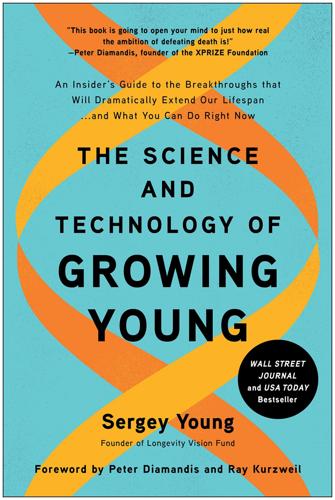
The Science and Technology of Growing Young: An Insider's Guide to the Breakthroughs That Will Dramatically Extend Our Lifespan . . . And What You Can Do Right Now
by
Sergey Young
Published 23 Aug 2021
,” Safety.com, last modified January 13, 2020, https://www.safety.com/ridesharing-reduce-drunk-driving-incidents/. 16Ricki J. Colman et al., “Caloric Restriction Delays Disease Onset and Mortality in Rhesus Monkeys,” Science 325, no. 5937 (2009), https://doi.org/10.1126/science.1173635.; Sally E. Silverstone, “Food production and nutrition for the crew during the first 2-year closure of Biosphere 2,” Life support & biosphere science 4, no. 3-4 (1997); Christopher Turner, “Ingestion / Planet in a Bottle,” Cabinet Magazine, last modified Spring, 2011, http://www.cabinetmagazine.org/issues/41/turner.php.; Mark P. Mattson, Valter D. Longo, and Michelle Harvie, “Impact of intermittent fasting on health and disease processes,” Ageing research reviews 39 (2017), https://doi.org/10.1016/j.arr.2016.10.005.; Alessio Nencioni et al., “Fasting and cancer: molecular mechanisms and clinical application,” Nature reviews.
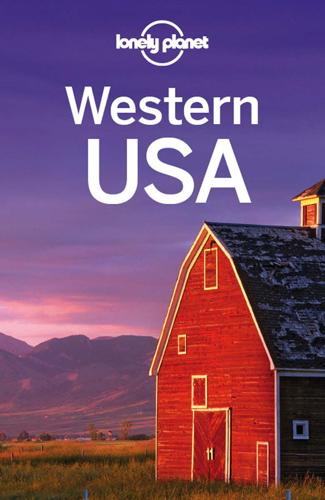
Western USA
by
Lonely Planet
Around Tucson The places listed following are less than 1½ hours’ drive from town and make great day trips. NORTH OF TUCSON About 35 miles away from downtown via backcountry roads, Biosphere 2 ( 520-896-6200; www.b2science.org; 32540 S Biosphere Rd, Oracle; adult/child/senior $20/13/18; 9am-4pm) is a 3-acre glassed dome housing seven separate microhabitats – a jungle, a desert, a swamp – designed to be self-sustaining. In 1991 eight bionauts entered Biosphere 2 for a two-year tour of duty, during which they were physically cut off from the outside world. They emerged thinner, but in fair shape. Although this experiment could be used as a prototype for future space stations, it was privately funded and controversial.

Microtrends: The Small Forces Behind Tomorrow's Big Changes
by
Mark Penn
and
E. Kinney Zalesne
Published 5 Sep 2007
Similar experiments have shown the same effects in mice, hamsters, spiders, worms, fish, flies, monkeys, and dogs. And when they eat that much less, these animals not only live longer—they are healthier and more vibrant right until the end. One indication that Calorie Restriction (CR) works the same way in people comes from the Biosphere 2 experiment in the 1990s, when eight bioscientists locked themselves in an airtight terrarium for two years, only to find that the ecosystem, intended to be self-sustaining, barely produced enough food to keep them alive. But rather than abandon the experiment, they were persuaded by their physician, Roy Walford—who fifteen years later founded the Calorie Restriction diet—to live at mere subsistence levels.
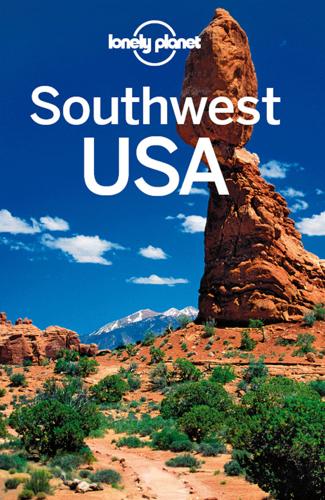
Southwest USA Travel Guide
by
Lonely Planet
Camping (campsites $25) is available at 85 electric, first-come, first-served sites; suitable for tents or RVs. Biosphere 2BIOSPHERE (520-838-6200; www.b2science.org; 32540 S Biosphere Rd, Oracle; adult/child/senior $20/13/18; 9am-4pm) Built to be completelysealed off from Biosphere 1 (that would be Earth), Biosphere 2 is a 3-acre campus of glass domes and pyramids containing five ecosystems: tropical ocean, mangrove wetlands, tropical rainforest, savannahand coastal fog desert. In 1991, eight biospherians were sealed inside for a two-year tour of duty from which they emerged thinner but in pretty fair shape.
…
After several changes in ownership, the sci-fi-esque site is now a University of Arizona-run earth science research institute. Public tours take in the biospherians’ apartments, farm area and kitchen, the one-million gallon ‘tropical ocean’ and the ‘technosphere’ that holds the mechanics that made it all possible. Biosphere 2 is near Oracle, about 30 miles north of Tucson via Hwy 77 (Oracle Rd) or 30 miles east of the I-10 (exit 240, east on Tangerine Rd, then north on Hwy 77). No pets. Casa Grande Ruins National MonumentNATIONAL MONUMENT (520-723-3172; www.nps.gov/cagr; 1100 W Ruins Dr, Coolidge; adult/child $5/free; 9am-5pm) Built around AD 1350, Casa Grande (Big House) is the country’s largest Hohokam structures still standing, with 11 rooms spread across four floors and mud walls several feet thick.
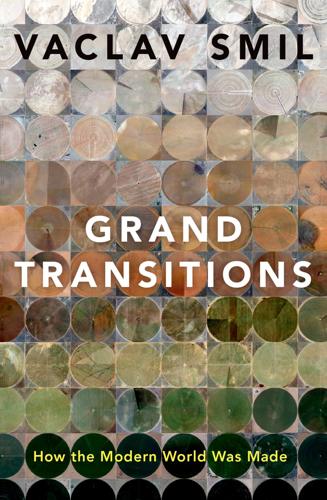
Grand Transitions: How the Modern World Was Made
by
Vaclav Smil
Published 2 Mar 2021
That dilemma is whether the management of the fifth transition will determine the real success or eventual failure of the first four epochal shifts, and at this point it is impossible to say if we will succeed (at least to a large extent) or if we will largely fail in the most fundamental quest, that of maintaining a habitable biosphere. 2 Populations Demographic transitions have resulted in an epochal shift that was engendered by other major, unprecedented transformations and that has, in turn, brought a variety of social, economic, political, and environmental consequences. Inevitably, this process has been a major subject of modern population studies ever since its notion emerged during the 1930s.
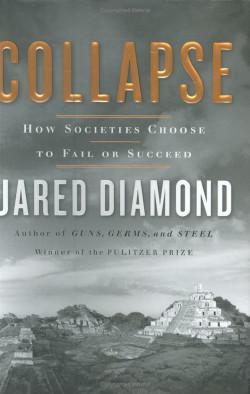
Collapse
by
Jared Diamond
Published 25 Apr 2011
Elimination of lots of lousy little species regularly causes big harmful consequences for humans, just as does randomly knocking out many of the lousy little rivets holding together an airplane. The literally innumerable examples include: the role of earthworms in regenerating soil and maintaining its texture (one of the reasons that oxygen levels dropped inside the Biosphere 2 enclosure, harming its human inhabitants and crippling a colleague of mine, was a lack of appropriate earthworms, contributing to altered soil/atmosphere gas exchange); soil bacteria that fix the essential crop nutrient nitrogen, which otherwise we have to spend money to supply in fertilizers; bees and other insect pollinators (they pollinate our crops for free, whereas it's expensive for us to pollinate every crop flower by hand); birds and mammals that disperse wild fruits (foresters still haven't figured out how to grow from seed the most important commercial tree species of the Solomon Islands, whose seeds are naturally dispersed by fruit bats, which are becoming hunted out); elimination of whales, sharks, bears, wolves, and other top predators in the seas and on the land, changing the whole food chain beneath them; and wild plants and animals that decompose wastes and recycle nutrients, ultimately providing us with clean water and air. 4.
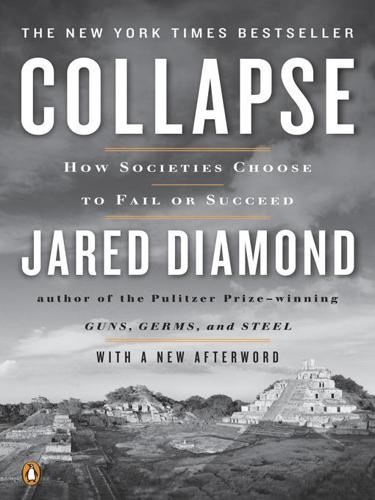
Collapse: How Societies Choose to Fail or Succeed
by
Jared Diamond
Published 2 Jan 2008
Elimination of lots of lousy little species regularly causes big harmful consequences for humans, just as does randomly knocking out many of the lousy little rivets holding together an airplane. The literally innumerable examples include: the role of earthworms in regenerating soil and maintaining its texture (one of the reasons that oxygen levels dropped inside the Biosphere 2 enclosure, harming its human inhabitants and crippling a colleague of mine, was a lack of appropriate earthworms, contributing to altered soil/atmosphere gas exchange); soil bacteria that fix the essential crop nutrient nitrogen, which otherwise we have to spend money to supply in fertilizers; bees and other insect pollinators (they pollinate our crops for free, whereas it’s expensive for us to pollinate every crop flower by hand); birds and mammals that disperse wild fruits (foresters still haven’t figured out how to grow from seed the most important commercial tree species of the Solomon Islands, whose seeds are naturally dispersed by fruit bats, which are becoming hunted out); elimination of whales, sharks, bears, wolves, and other top predators in the seas and on the land, changing the whole food chain beneath them; and wild plants and animals that decompose wastes and recycle nutrients, ultimately providing us with clean water and air. 4.
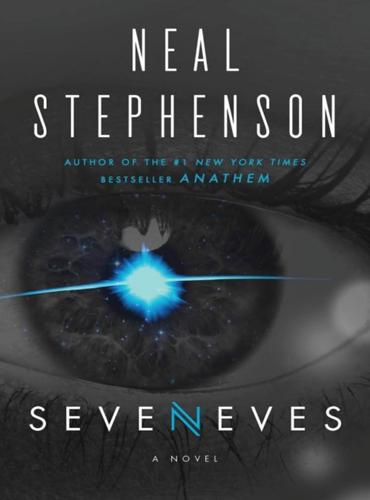
Seveneves
by
Neal Stephenson
Published 19 May 2015
And anyway, could the arklets really support five humans each? Without a doubt they were large enough for five people to bang around in, but it was not at all clear that each could be self-sufficient in food production. Building a sustainable ecosystem in a tube the size of a railway tank car was no small task. Biosphere 2, a well-known experiment in the Arizona desert, had attempted to support eight people on an ecosystem the size of a couple of football fields, and been unable to make it work long term. But its mission had been clouded by political strife and odd quasi-spiritual factors. A more down-to-earth project run by the Soviets had determined that eight square meters of algae—an expanse of pond scum about the size of two ping-pong tables—was needed to keep a single human supplied with oxygen.

USA Travel Guide
by
Lonely, Planet
Around Tucson The places listed following are less than 1½ hours’ drive from town and make great day trips. NORTH OF TUCSON About 35 miles away from downtown via backcountry roads, Biosphere 2 ( 520-896-6200; www.b2science.org; 32540 S Biosphere Rd, Oracle; adult/child/senior $20/13/18; 9am-4pm) is a 3-acre glassed dome housing seven separate microhabitats – a jungle, a desert, a swamp – designed to be self-sustaining. In 1991 eight bionauts entered Biosphere 2 for a two-year tour of duty, during which they were physically cut off from the outside world. They emerged thinner, but in fair shape. Although this experiment could be used as a prototype for future space stations, it was privately funded and controversial.